Benzamide derivative
Shi , et al. Fe
U.S. patent number 10,550,073 [Application Number 15/763,807] was granted by the patent office on 2020-02-04 for benzamide derivative. This patent grant is currently assigned to CSPC Zhongqi Pharmaceutical Technology (Shijiazhuang) Co., Ltd.. The grantee listed for this patent is CSPC ZHONGQI PHARMACEUTICAL TECHNOLOGY (SHIJIAZHUANG) CO., LTD.. Invention is credited to Min Bai, Xiaozhuo Chen, Yujie Chen, Qingzhi Gao, Denghuang Gong, Yuxiu Ma, Yi Mi, Ying Shi, Xuliang Wang, Hanyu Yang, Xuejiao Zhang.

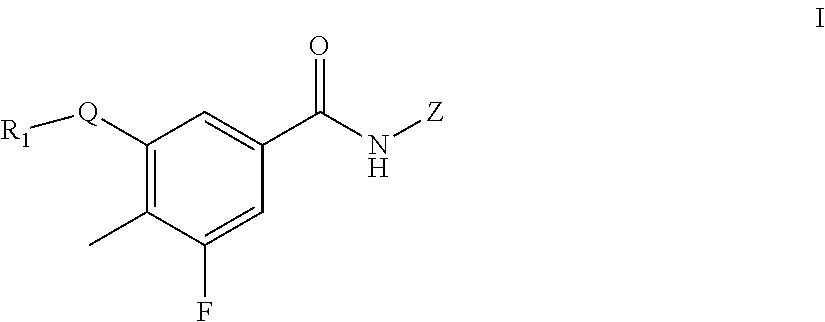










View All Diagrams
| United States Patent | 10,550,073 |
| Shi , et al. | February 4, 2020 |
Benzamide derivative
Abstract
The present invention relates to a benzamide derivative of general formula I, a drug composition containing same and a use thereof as a drug, wherein the definitions of R.sub.1, Z and Q are as described in the description. ##STR00001##
| Inventors: | Shi; Ying (Hebei, CN), Mi; Yi (Hebei, CN), Yang; Hanyu (Hebei, CN), Wang; Xuliang (Hebei, CN), Gong; Denghuang (Hebei, CN), Bai; Min (Hebei, CN), Chen; Xiaozhuo (Hebei, CN), Chen; Yujie (Hebei, CN), Zhang; Xuejiao (Hebei, CN), Ma; Yuxiu (Hebei, CN), Gao; Qingzhi (Hebei, CN) | ||||||||||
|---|---|---|---|---|---|---|---|---|---|---|---|
| Applicant: |
|
||||||||||
| Assignee: | CSPC Zhongqi Pharmaceutical
Technology (Shijiazhuang) Co., Ltd. (CN) |
||||||||||
| Family ID: | 58418294 | ||||||||||
| Appl. No.: | 15/763,807 | ||||||||||
| Filed: | September 30, 2016 | ||||||||||
| PCT Filed: | September 30, 2016 | ||||||||||
| PCT No.: | PCT/CN2016/101038 | ||||||||||
| 371(c)(1),(2),(4) Date: | March 27, 2018 | ||||||||||
| PCT Pub. No.: | WO2017/054765 | ||||||||||
| PCT Pub. Date: | April 06, 2017 |
Prior Publication Data
| Document Identifier | Publication Date | |
|---|---|---|
| US 20180312462 A1 | Nov 1, 2018 | |
Foreign Application Priority Data
| Sep 30, 2015 [CN] | 2015 1 0638788 | |||
| Jun 3, 2016 [CN] | 2016 1 0390661 | |||
| Current U.S. Class: | 1/1 |
| Current CPC Class: | A61K 31/50 (20130101); C07D 409/06 (20130101); A61P 9/10 (20180101); C07D 211/16 (20130101); C07C 237/38 (20130101); C07D 211/46 (20130101); C07D 333/38 (20130101); C07D 401/12 (20130101); A61P 43/00 (20180101); A61P 19/02 (20180101); A61P 9/00 (20180101); C07D 401/06 (20130101); A61P 17/06 (20180101); A61P 29/00 (20180101); A61P 19/00 (20180101); A61K 31/44 (20130101); C07C 273/1854 (20130101); A61P 1/00 (20180101); A61P 35/00 (20180101); C07C 275/38 (20130101); C07C 231/12 (20130101); C07D 213/82 (20130101); C07C 237/42 (20130101); C07C 235/84 (20130101); A61P 1/04 (20180101); A61P 11/06 (20180101); C07D 213/81 (20130101); C07D 295/192 (20130101); A61P 19/06 (20180101); C07D 277/82 (20130101); A61P 3/10 (20180101); C07D 403/12 (20130101); A61P 11/00 (20180101); C07D 237/24 (20130101); C07C 2601/08 (20170501); C07C 2601/02 (20170501); C07C 2601/14 (20170501) |
| Current International Class: | C07C 235/84 (20060101); C07D 295/192 (20060101); C07D 333/38 (20060101); C07D 401/12 (20060101); C07D 409/06 (20060101); C07D 401/06 (20060101); C07D 237/24 (20060101); C07C 231/12 (20060101); C07C 237/38 (20060101); C07C 237/42 (20060101); C07C 273/18 (20060101); C07C 275/38 (20060101); C07D 211/16 (20060101); C07D 211/46 (20060101); C07D 213/81 (20060101); C07D 213/82 (20060101); C07D 277/82 (20060101); C07D 403/12 (20060101) |
| WO-03068747 | Aug 2003 | WO | |||
| WO 2004/089874 | Oct 2004 | WO | |||
| WO 2004/089876 | Oct 2004 | WO | |||
Other References
|
Norman, P., "Investigational p38 inhibitors for the treatment of chronic obstructive pulmonary disease." Expert opinion on investigational drugs 24.3 (2015): 383-392. cited by examiner . Aston, N. M., "p38.alpha. mitogen-activated protein kinase inhibitors: optimization of a series of biphenylamides to give a molecule suitable for clinical progression." Journal of medicinal chemistry 52.20 (2009): 6257-6269; Supporting Information p. S1-S4. cited by examiner . Aston, et al., "p38r Mitogen-Activated Protein Kinase Inhibitors: Optimization of a Series of Biphenylamides to Give a Molecule Suitable for Clinical Progression," J. Med. Chem., vol. 52, No. 20, Sep. 22, 2009, pp. 6257-6269. cited by applicant. |
Primary Examiner: Mauro; John M
Attorney, Agent or Firm: Lewis Roca Rothgerber Christie LLP
Claims
The invention claimed is:
1. A compound of formula I, or a tautomer, an optical isomer or a pharmaceutically acceptable salt thereof: ##STR00576## wherein: Q is selected from the group consisting of ##STR00577## R.sup.c-f is independently selected from the group consisting of H, halogen, hydroxyl, amino, C.sub.1-6alkyl and C.sub.1-6alkoxy, wherein the alkyl and the alkoxy may be optionally substituted by one or more substituents selected from the group consisting of halogen, hydroxyl and amino, the amino may be optionally substituted by one or two C.sub.1-6alkyl; R.sub.1 is: ##STR00578## R.sub.2 and R.sub.3 are independently selected from the group consisting of H, C.sub.1-6 alkyl, (CH.sub.2).sub.0-3-3.about.7-membered cycloalkyl and heterocycloalkyl containing 1 or 2 heteroatoms, and R.sub.2 and R.sub.3 are not hydrogen at the same time; wherein the C.sub.1-6alkyl may be optionally substituted by one or more substituents selected from the group consisting of halogen, hydroxyl, amino, cyano, C.sub.1-6alkoxy, (C.sub.0-6 alkyl) (C.sub.0-6 alkyl) amino, (C.sub.0-6 alkyl) thio, (C.sub.1-6 alkyl)carbonyl and (C.sub.1-6 alkyl) sulfonyl; the 3.about.7-membered cycloalkyl or heterocycloalkyl is substituted by one R.sup.m, wherein the R.sup.m is selected from the group consisting of hydrogen, C.sub.1-6alkyl, hydroxyl, halogen and amino, the heteroatom of the heterocycloalkyl is selected from O, N and S; or R.sub.2 and R.sub.3, together with the atoms attached thereto, form a 5, 6 or 7-membered ring, wherein, the 5, 6 or 7-membered ring is substituted by one R.sup.n, wherein the R.sup.n is selected from hydrogen, C.sub.1-6alkyl, hydroxyl, halogen and amino; the 5, 6 or 7-membered ring, in addition to the N atom attaching to R.sub.2 and R.sub.3, further contains 0, 1 or 2 heteroatoms selected from O, N, and S; or ##STR00579## R.sub.4 is selected from the group consisting of C.sub.1-6alkyl, --(CH.sub.2).sub.0-1-5.about.7-membered cycloalkyl, --CO(CH.sub.2).sub.0-1--R.sub.5 and --CONH--R.sub.6, R.sub.5 and R.sub.6 are independently selected from C.sub.1-6alkyl and (CH.sub.2).sub.0-1-5.about.7-membered cycloalkyl; Z is (CH.sub.2).sub.0-3--Y; Y is selected from the group consisting of 3.about.7-membered cycloalkyl, heterocycloalkyl containing 1 or 2 heteroatoms, hydroxyl, C.sub.1-6alkoxy, halogen, amino, cyano, nitro, alkenyl and alkynyl; wherein, the cycloalkyl, heterocycloalkyl, amino, alkenyl and alkynyl are optionally substituted by the substituents selected from the group consisting of C.sub.1-6alkyl, C.sub.1-6alkoxy, halogen, hydroxyl, amino, cyano and nitro; the heteroatom of the heterocycloalkyl is selected from N, S and O.
2. The compound of formula I, or the tautomer, the optical isomer or the pharmaceutically acceptable salt thereof according to claim 1, characterized in that: Z is selected from the group consisting of: ##STR00580##
3. The compound of formula I, or the tautomer, the optical isomer or the pharmaceutically acceptable salt thereof according to claim 1, characterized in that: Z is selected from the group consisting of: ##STR00581##
4. The compound of formula I, or the tautomer, the optical isomer or the pharmaceutically acceptable salt thereof according to claim 1, characterized in that: Z is: ##STR00582##
5. A compound of formula I, or a tautomer, an optical isomer or a pharmaceutically acceptable salt thereof: ##STR00583## wherein: Q is selected from the group consisting of: ##STR00584## R.sub.1 is: ##STR00585## R.sub.2 and R.sub.3 are independently selected from the group consisting of H, C.sub.1-6alkyl, (CH.sub.2).sub.0-3-3.about.7-membered cycloalkyl and heterocycloalkyl containing 1 or 2 heteroatoms, and R.sub.2 and R.sub.3 are not hydrogen at the same time; wherein the C.sub.1-6alkyl may be optionally substituted by one or more substituents selected from the group consisting of halogen, hydroxyl, amino, cyano, C.sub.1-6alkoxy, (C.sub.0-6 alkyl) (C.sub.0-6 alkyl) amino, (C.sub.0-6 alkyl) thio, (C.sub.1-6 alkyl)carbonyl and (C.sub.1-6 alkyl) sulfonyl; the 3.about.7-membered cycloalkyl or heterocycloalkyl is substituted by one R.sup.m, wherein the R.sup.m is selected from the group consisting of hydrogen, C.sub.1-6alkyl, hydroxyl, halogen and amino, the heteroatom of the heterocycloalkyl is selected from O, N and S; or R.sub.2 and R.sub.3, together with the atoms attached thereto, form a 5, 6 or 7-membered ring, wherein, the 5, 6 or 7-membered ring is substituted by one R.sup.n, wherein the R.sup.n is selected from hydrogen, C.sub.1-6alkyl, hydroxyl, halogen and amino; the 5, 6 or 7-membered ring, in addition to the N atom attaching to R.sub.2 and R.sub.3, further contains 0, 1 or 2 heteroatoms selected from O, N, and S; ##STR00586## R.sub.4 is selected from the group consisting of C.sub.1-6alkyl, --(CH.sub.2).sub.0-1-5.about.7-membered cycloalkyl, --CO(CH.sub.2).sub.0-1--R.sub.5 and --CONH--R.sub.6, R.sub.5 and R.sub.6 are independently selected from C.sub.1-6alkyl and (CH.sub.2).sub.0-1-5.about.7-membered cycloalkyl; Z is (CH.sub.2).sub.0-3--Y; Y is selected from the group consisting of 3.about.7-membered cycloalkyl, heterocycloalkyl containing 1 or 2 heteroatoms, hydroxyl, C.sub.1-6alkoxy, halogen, amino, cyano, nitro, alkenyl and alkynyl; wherein, the cycloalkyl, heterocycloalkyl, amino, alkenyl and alkynyl are optionally substituted by the substituents selected from the group consisting of C.sub.1-6alkyl, C.sub.1-6alkoxy, halogen, hydroxyl, amino, cyano and nitro; the heteroatom of the heterocycloalkyl is selected from N, S and O.
6. The compound of formula I, or the tautomer, the optical isomer or the pharmaceutically acceptable salt thereof according to claim 5, characterized in that: Q is selected from the group consisting of: ##STR00587##
7. The compound of formula I, or the tautomer, the optical isomer or the pharmaceutically acceptable salt thereof according to claim 5, characterized in that: Q is selected from: ##STR00588##
8. The compound of formula I, or the tautomer, the optical isomer or the pharmaceutically acceptable salt thereof according to claim 1, characterized in that: R.sub.1 is: ##STR00589## R.sub.2 and R.sub.3 are independently selected from the group consisting of H, C.sub.1-6alkyl, (CH.sub.2).sub.0-3-3.about.7-membered cycloalkyl and heterocycloalkyl containing 1 or 2 heteroatoms, and the R.sub.2 and R.sub.3 are not hydrogen at the same time; wherein the C.sub.1-6alkyl may be substituted by one or more substituents selected from the group consisting of halogen, hydroxyl, amino, cyano, C.sub.1-6alkoxy, (C.sub.0-6 alkyl) (C.sub.0-6 alkyl) amino, (C.sub.0-6 alkyl) thio, (C.sub.1-6 alkyl)carbonyl and (C.sub.1-6 alkyl) sulfonyl; the 3.about.7-membered cycloalkyl or heterocycloalkyl is substituted by one R.sup.m, wherein the R.sup.m is selected from the group consisting of hydrogen, C.sub.1-6alkyl, hydroxyl, halogen and amino, the heteroatom of the heterocycloalkyl is selected from O, N, and S; or R.sub.2 and R.sub.3, together with the atoms attached thereto, form a 5, 6 or 7-membered ring, wherein, the 5-, 6- or 7-membered ring is substituted by one R.sup.n, wherein the R.sup.n is selected from hydrogen, C.sub.1-6alkyl, hydroxyl, halogen and amino; the 5, 6 or 7-membered ring, in addition to the N atom attaching to R.sub.2 and R.sub.3, further contain 0, 1 or 2 heteroatoms selected from O, N, and S.
9. The compound of formula I, or the tautomer, the optical isomer or the pharmaceutically acceptable salt thereof according to claim 1, characterized in that: R.sub.1 is: ##STR00590## R.sub.2 and R.sub.3 are independently selected from the group consisting of H, C.sub.1-6alkyl, (CH.sub.2).sub.0-3-3.about.7-membered cycloalkyl, and R.sub.2 and R.sub.3 are not hydrogen at the same time; wherein the C.sub.1-6alkyl may be substituted by one or more substituents selected from the group consisting of halogen, hydroxyl, amino, cyano, C.sub.1-6alkoxy, (C.sub.0-6 alkyl) (C.sub.0-6 alkyl) amino, (C.sub.0-6 alkyl) thio, (C.sub.1-6 alkyl)carbonyl and (C.sub.1-6 alkyl) sulfonyl; the 3.about.7-membered cycloalkyl is substituted by one R.sup.m, wherein the R.sup.m is selected from the group consisting of hydrogen, C.sub.1-6alkyl, hydroxyl, halogen and amino; or R.sub.2 and R.sub.3, together with the atoms attached thereto, form a 5, 6 or 7-membered ring, wherein, the 5-, 6- or 7-membered ring is substituted by one R.sup.n, wherein the R.sup.n is selected from hydrogen, C.sub.1-6alkyl, hydroxyl, halogen and amino.
10. The compound of formula I, or the tautomer, the optical isomer or the pharmaceutically acceptable salt thereof according to claim 1, characterized in that: R.sub.1 is: ##STR00591## one of R.sub.2 and R.sub.3 is H, the other is selected from the group consisting of C.sub.1-6alkyl, (CH.sub.2).sub.0-3-3.about.7-membered cycloalkyl; wherein the C.sub.1-6alkyl may be substituted by one or more substituents selected from the group consisting of halogen, hydroxyl, amino, cyano, C.sub.1-6alkoxy, (C.sub.0-6 alkyl) (C.sub.0-6 alkyl) amino, (C.sub.0-6 alkyl) thio, (C.sub.1-6 alkyl)carbonyl and (C.sub.1-6 alkyl) sulfonyl; the 3.about.7-membered cycloalkyl is substituted by one R.sup.m, wherein the R.sup.m is selected from hydrogen, C.sub.1-6alkyl, hydroxyl, halogen and amino.
11. The compound of formula I, or the tautomer, the optical isomer or the pharmaceutically acceptable salt thereof according to claim 1, characterized in that: R.sub.1 is selected from: ##STR00592## ##STR00593##
12. The compound of formula I, or the tautomer, the optical isomer or the pharmaceutically acceptable salt thereof according to claim 1, characterized in that: R.sub.1 is selected from: ##STR00594## ##STR00595##
13. A compound or a tautomer, an optical isomer, or a pharmaceutically acceptable salt thereof, selected from: ##STR00596## ##STR00597## ##STR00598## ##STR00599## ##STR00600## ##STR00601## ##STR00602## ##STR00603## ##STR00604## ##STR00605## ##STR00606## ##STR00607##
14. A pharmaceutical composition, comprising the compound of formula I, or the tautomer, the optical isomer or the pharmaceutically acceptable salt thereof according to claim 1.
15. A pharmaceutical composition, comprising the compound, or the tautomer, the optical isomer or the pharmaceutically acceptable salt thereof according to claim 13.
16. A method for treating symptoms or diseases mediated by p38 kinase activity or mediated by the cytokines produced by p38 kinase activity comprising administering to a subject a therapeutically effective amount of the compound of formula I, or the tautomer, the optical isomer or the pharmaceutically acceptable salt thereof according to claim 1.
17. A method for treating symptoms or diseases mediated by p38 kinase activity or mediated by the cytokines produced by p38 kinase activity comprising administering to a subject a therapeutically effective amount of the compound, or the tautomer, the optical isomer or the pharmaceutically acceptable salt thereof according to claim 13.
18. The method according to claim 16, wherein the disease is selected from inflammatory disease.
19. The method according to claim 17, wherein the disease is selected from inflammatory disease.
20. The method according to claim 16, wherein the disease is selected from rheumatoid arthritis, chronic lung obstruction, cardiovascular disease, gout, psoriasis, asthma, tumor, diabetes mellitus, arteriosclerosis and Crohn's disease.
21. The method according to claim 17, wherein the disease is selected from rheumatoid arthritis, chronic lung obstruction, cardiovascular disease, gout, psoriasis, asthma, tumor, diabetes mellitus, arteriosclerosis and Crohn's disease.
22. A method for preparing the compound of formula I, or the tautomer, the optical isomer or the pharmaceutically acceptable salt thereof according to claim 1, comprising condensing a compound of formula II and a compound of formula III to form the compound of formula I: ##STR00608## Q, Z and R.sub.1 were defined as claim 1, X is halogen.
Description
CROSS-REFERENCE TO RELATED APPLICATION(S)
This application is a National Phase Patent Application and claims priority to and the benefit of International Application Number PCT/CN2016/101038, filed on Sep. 30, 2016, which claims priority to Chinese Patent Application Number 201510638788.3, filed on Sep. 30, 2015, and Chinese Patent Application Number 201610390661.9, filed on Jun. 3, 2016, the entire contents of all of which are incorporated herein by reference.
TECHNICAL FIELD
The present invention belongs to the technical field of medicine and relates to a new benzamide derivative, a pharmaceutical composition containing the same, a preparation method thereof and a use thereof as a drug.
BACKGROUND ART
Mitogen-activated protein kinase (MAPK), which belongs to serine/threonine kinases, is an important molecule which can receive signals delivered by a receptor and bring the signals into the cell nucleus, has an important mechanism for participating in the regulation of gene expression, cell proliferation and death, and plays a key role in many receptor signaling pathways. P38 kinase, an important member in the mitogen-activated protein kinase (MAPK) family, is considered as an important part of the cell factor-mediated immune response mechanism, the p38 kinase not only plays an important role in inflammatory and stress reaction but also participates in the processes of cell survival, differentiation and apoptosis, therefore, it is considered as an important protein in numerous cell signaling pathways. It is known that p38 kinase can phosphorylate some intracellular proteins, which involve in the cascade of the enzymatic step and can result in the biological synthesis and release of cytokines (such as TNF-.alpha. and IL-1). Research finds that p38 kinase has an obvious regulation effect on the occurrence of many diseases, and particularly plays a core role in the regulation of inflammatory response diseases. The inflammatory response is essentially an important component of human autoimmune system, if an exception occurs, a series of serious diseases, such as rheumatoid arthritis, chronic lung obstruction, cardiovascular disease, gout, psoriasis, asthma, tumor, diabetes mellitus, arteriosclerosis, Crohn's disease and the like will be caused.
It is well known that cytokines are produced by a variety of cells (such as single cell and macrophages), which can result in a number of physiological effects, these physiological effects are considered to be very important in diseases (such as inflammation and immunoregulation). Cytokines are also considered to affect the generation and the development of diseases.
Tumor necrosis factor-.alpha. (TNF-.alpha.) and interleukin-1 (IL-1) are two important proinflammatory cytokines, they are considered as the main medium for activating the cell cascade reactions and play a leading role in the systemic inflammatory response, which is described in Charles A. Dinarello et al., inflammatory cytokines: interleukin-1 and tumor necrosis factor as effect or molecules in autoimmune diseases, Current Opinion in Immunology, 1991, 3(6), 941-948. Research shows that when a specific inhibitor acts on the p38 kinase, the expression quantity of the proinflammatory cytokines such as TNF-.alpha. and the like is remarkably reduced, this indicates that the over-expression of TNF-.alpha. and the like in inflammatory reactions is closely related to the activity of p38 kinase. P38 kinase participates in the inflammatory reaction process by controlling and modulating the synthesis and the release process of proinflammatory cytokines such as tumor necrosis factor-.alpha. (TNF-.alpha.), interleukin-1.beta. (IL-1.beta.) and anti-inflammatory factors such as interleukin-10 and the like. Therefore, cytokines (such as TNF-.alpha. and IL-1) are considered to participate in mediating many diseases, and it is expected that the inhibition on the generation and/or the effect of these cytokines may help prevent, control or treat these diseases.
Non-steroidal anti-inflammatory drugs (NSAIDs) are the most common anti-inflammatory drugs, however, many individuals cannot tolerate the dosage required by long-time treatment of the diseases, the use of such drugs often cause serious toxic and side effects, such as the damage of gastrointestinal tract, kidney and liver, and sometimes may induce cardiovascular adverse events. In the biological treatment field of anti-inflammatory cytokines, great successes have been achieved in the use of the biological agents such as Etanercept, Inflimab, Adalimumab, Anakinra and the like for treating inflammatory patients, to whom the non-steroidal anti-inflammatory drugs are ineffective or inconvenient. However, as macromolecular drugs, the biological agents have many defects such as relatively long research period, being difficult to industrialize, relatively high production cost, and being inconvenient to use as an injection preparation and the like, therefore, there is a need for new oral anti-inflammatory drugs which are convenient to use and have good curative effect in the field of anti-inflammatory therapy. Since p38 kinase is considered to be a key anti-inflammatory target, it regulates TNF, IL-1 and other inflammatory factors and plays an important biological role in regulating the inflammatory response, as a small chemical molecule substance, the p38 kinase inhibitor has the potential to be developed into a novel small molecular drug for treating inflammatory diseases. However, poor oral bioavailability and high toxicity have been the main problem in preventing these compounds from becoming drugs.
SUMMARY OF THE INVENTION
In one aspect, the present invention provides a compound of formula I, or a tautomer, an optical isomer and a pharmaceutically acceptable salt thereof:
##STR00002## wherein: Q is selected from the group consisting of
##STR00003## R.sup.a-f is independently selected from the group consisting of H, halogen, hydroxyl, amino, C.sub.1-6alkyl and C.sub.1-6alkoxy, wherein the alkyl and the alkoxy may be optionally substituted by one or more substituents selected from the group consisting of halogen, hydroxyl and amino, the amino may be optionally substituted by one or two C.sub.1-6alkyl; R.sub.1 is:
##STR00004## R.sub.2 and R.sub.3 are independently selected from the group consisting of H, C.sub.1-6alkyl, (CH.sub.2).sub.0-3-3.about.7-membered (such as (CH.sub.2).sub.0-3-5.about.7-membered)cycloalkyl and heterocycloalkyl containing 1 or 2 heteroatoms, and R.sub.2 and R.sub.3 are not hydrogen at the same time; wherein the C.sub.1-6alkyl may be optionally substituted by one or more substituents selected from the group consisting of halogen, hydroxyl, amino, cyano, C.sub.1-6alkoxy, (C.sub.0-6 alkyl) (C.sub.0-6 alkyl) amino, (C.sub.0-6 alkyl) thio, (C.sub.1-6 alkyl)carbonyl and (C.sub.1-6 alkyl) sulfonyl; the 3.about.7-membered (such as 5.about.7-membered)cycloalkyl or heterocycloalkyl is substituted by one R.sup.m, wherein the R.sup.m is selected from the group consisting of hydrogen, C.sub.1-6alkyl, hydroxyl, halogen and amino, the heteroatom of the heterocycloalkyl is selected from O, N, and S; or R.sub.2 and R.sub.3, together with the atoms attached thereto, form a 5, 6 or 7-membered ring, wherein, the 5, 6 or 7-membered ring is substituted by one R.sup.n, wherein the R.sup.n is selected from hydrogen, C.sub.1-6alkyl, hydroxyl, halogen and amino; the 5, 6 or 7-membered ring, in addition to the N atom attaching to R.sub.2 and R.sub.3d, further contains 0, 1 or 2 heteroatoms selected from O, N, and S;
##STR00005## R.sub.4 is selected from the group consisting of C.sub.1-6alkyl, --(CH.sub.2).sub.0-1-5.about.7-membered cycloalkyl, --CO(CH.sub.2).sub.0-1--R.sub.5 and --CONH--R.sub.6. R.sub.5 and R.sub.6 are independently selected from C.sub.1-6alkyl and --(CH.sub.2).sub.0-1-5.about.7-membered cycloalkyl; Z is --(CH.sub.2).sub.0-3--Y; Y is selected from the group consisting of 3.about.7-membered cycloalkyl, heterocycloalkyl containing 1 or 2 heteroatoms, hydroxyl. C.sub.1-6alkoxy, halogen, amino, cyano, nitro, alkenyl and alkynyl; wherein, the cycloalkyl, heterocycloalkyl, amino, alkenyl and alkynyl are optionally substituted by the substituents selected from the group consisting of C.sub.1-6alkyl, C.sub.1-6alkoxy, halogen, hydroxyl, amino, cyano and nitro; the heteroatom of the heterocycloalkyl is selected from N, S and O; with the proviso that the compound of formula I does not contain the following compounds:
##STR00006## ##STR00007## ##STR00008## ##STR00009## ##STR00010## ##STR00011## ##STR00012## ##STR00013## 6-{5-[(cyclopropylamino)carbonyl]-3-fluoro-2-methylphenyl}-N-(1-methylbut- yl) nicotinamide, 6-{5-[(cyclopropylamino)carbonyl]-3-fluoro-2-methylphenyl}-N-isobutyl-N-m- ethyl nicotinamide, 6-{5-[(cyclopropylamino)carbonyl]-3-fluoro-2-methylphenyl}-N-(1,3-dimethy- lbutyl) nicotinamide, N-cyclopentyl-6-{5-[(cyclopropylamino)carbonyl]-3-fluoro-2-methylphenyl}-- N-methyl nicotinamide, 6-{5-[(cyclopropylamino)carbonyl]-3-fluoro-2-methylphenyl}-N-(3,3-dimethy- lbutyl) nicotinamide, 6-{5-[(cyclopropylamino)carbonyl]-3-fluoro-2-methylphenyl}-N-ethyl-N-isop- ropyl nicotinamide, 6-{5-[(cyclopropylamino)carbonyl]-3-fluoro-2-methylphenyl}-N-(tertpentyl) nicotinamide, 6-{5-[(cyclopropylamino)carbonyl]-3-fluoro-2-methylphenyl}-N-(3,3,3-trifl- uoropropyl) nicotinamide, 6-{5-[(cyclopropylamino)carbonyl]-3-fluoro-2-methylphenyl}-N-(1,1-dimethy- l butyl) nicotinamide, N-cyclohexyl-6-{5-[(cyclopropylamino)carbonyl]-3-fluoro-2-methylphenyl}-N- -ethyl nicotinamide, 6-{5-[(cyclopropylamino)carbonyl]-3-fluoro-2-methylphenyl}-N-methyl-N-(1-- methylcyclopentyl) nicotinamide, 6-{5-[(cyclopropylamino)carbonyl]-3-fluoro-2-methylphenyl}-N-isopropyl-N-- methyl nicotinamide, 6-{5-[(cyclopropylamino)carbonyl]-3-fluoro-2-methylphenyl}-N-(3,3,3-trifl- uoro-2-methylpropyl) nicotinamide, 6-{5-[(cyclopropylamino)carbonyl]-3-fluoro-2-methylphenyl}-N-(1-ethyl-1-m- ethylpropyl) nicotinamide, 6-{5-[(cyclopropylamino)carbonyl]-3-fluoro-2-methylphenyl}-N-ethyl nicotinamide, N-cyclopropyl-3-fluoro-4-methyl-5-{5-[(4-methylpiperidin-1-yl)carbonyl]py- ridine-2-yl) benzamide N-cyclopropyl-3-{5-[(2-ethylpiperidin-1-yl)carbonyl]pyridine-2-yl}-5-fluo- ro-4-methyl benzamide, N-cyclopropyl-3-{5-[(2-ethyl-2-methylpiperidin-1-yl)carbonyl]pyridine-2-y- l}-5-fluoro-4-methyl benzamide, N-cyclopropyl-3-fluoro-4-methyl-5-{5-[(2-propylpiperidin-1-yl)carbonyl]py- ridine-2-yl}benzamide, N-cyclopropyl-3-{5-[(2,4-dimethylpiperidin-1-yl)carbonyl]pyridine-2-yl}-5- -fluoro-4-methyl benzamide, N-cyclopropyl-3-{5-[(2,3-dimethylpiperidin-1-yl)carbonyl]pyridine-2-yl}-5- -fluoro-4-methyl benzamide, N-cyclopropyl-3-fluoro-4-methyl-5-{5-[(2,2,3-trimethylpyrrolidine-1-yl)ca- rbonyl]pyridine-2-yl}benzamide, N-cyclopropyl-3-{5-[(3-ethylpiperidin-1-yl)carbonyl]pyridine-2-yl}-5-fluo- ro-4-methyl benzamide, N-cyclopropyl-3-fluoro-4-methyl-5-{5-[(2-methylpiperidin-1-yl)carbonyl]py- ridine-2-yl}benzamide, N-cyclopropyl-3-{5-[(3,3-dimethylpiperidin-1-yl)carbonyl]pyridine-2-yl}-5- -fluoro-4-methyl benzamide, N-cyclopropyl-3-fluoro-4-methyl-5-{5-[(3-methylpiperidin-1-yl)carbonyl]py- ridine-2-yl}benzamide.
Preferably, R.sup.a-f is independently selected from the group consisting of H, F, hydroxyl, amino, methyl and methoxyl.
More preferably, R.sup.a-f is independently selected from the group consisting of H, amino, F and methyl.
Preferably, Q is selected from the group consisting of:
##STR00014##
More preferably, Q is selected from the group consisting of:
##STR00015##
Further preferably, Q is selected from the group consisting of:
##STR00016##
Further preferably, Q is selected from:
##STR00017##
Preferably, R.sub.1 is:
##STR00018## R.sub.2 and R.sub.3 are independently selected from the group consisting of H, C.sub.1-6alkyl, (CH.sub.2).sub.0-3-3.about.7-membered (such as (CH.sub.2).sub.0-3-5.about.7-membered)cycloalkyl and heterocycloalkyl containing 1 or 2 heteroatoms, and the R.sub.2 and R.sub.3 are not hydrogen at the same time; wherein the C.sub.1-6alkyl may be substituted by one or more substituents selected from the group consisting of halogen, hydroxyl, amino, cyano, C.sub.1-6alkoxy, (C.sub.0-6 alkyl) (C.sub.0-6 alkyl) amino, (C.sub.0-6 alkyl) thio, (C.sub.1-6 alkyl)carbonyl and (C.sub.1-6 alkyl) sulfonyl; the 3.about.7-membered (such as 5.about.7-membered)cycloalkyl or heterocycloalkyl is substituted by one R.sup.m, wherein the R.sup.m is selected from the group consisting of hydrogen, C.sub.1-6alkyl, hydroxyl, halogen and amino, the heteroatom of the heterocycloalkyl is selected from O, N, and S; or R.sub.2 and R.sub.3, together with the atoms attached thereto, form a 5, 6 or 7-membered ring, wherein, the 5-, 6- or 7-membered ring is substituted by one R.sup.n, wherein the R.sup.n is selected from hydrogen, C.sub.1-6alkyl, hydroxyl, halogen and amino; the 5, 6 or 7-membered ring, in addition to the N atom attaching to R.sub.2 and R.sub.3, further contain 0, 1 or 2 heteroatoms selected from O, N, and S.
More preferably, R.sub.1 is:
##STR00019## R.sub.2 and R.sub.3 are independently selected from the group consisting of H, C.sub.1-6alkyl, (CH.sub.2).sub.0-3-3.about.7-membered (such as (CH.sub.2).sub.0-3-5.about.7-membered)cycloalkyl, and R.sub.2 and R.sub.3 are not hydrogen at the same time; wherein the C.sub.1-6alkyl may be optionally substituted by one or more substituents selected from the group consisting of halogen, hydroxyl, amino, cyano, C.sub.1-6alkoxy, (C.sub.0-6 alkyl) (C.sub.0-6 alkyl) amino, (C.sub.0-6 alkyl) thio, (C.sub.1-6 alkyl)carbonyl and (C.sub.1-6 alkyl) sulfonyl; the 3.about.7-membered (such as 5.about.7-membered) cycloalkyl is substituted by one R.sup.m, wherein the R.sup.m is selected from the group consisting of hydrogen, C.sub.1-6alkyl, hydroxyl, halogen and amino; or R.sub.2 and R.sub.3, together with the atoms attached thereto, form a 5, 6 or 7-membered ring, wherein, the 5-, 6- or 7-membered ring is substituted by one R.sup.n, wherein the R.sup.n is selected from hydrogen, C.sub.1-6alkyl, hydroxyl, halogen and amino.
Further preferably, R.sub.1 is:
##STR00020##
One of R.sub.2 and R.sub.3 is H, the other is selected from the group consisting of C.sub.1-6alkyl, (CH.sub.2).sub.0-3-3.about.7-membered (such as (CH.sub.2).sub.0-3-5.about.7-membered)cycloalkyl; wherein the C.sub.1-6alkyl may be optionally substituted by one or more substituents selected from the group consisting of halogen, hydroxyl, amino, cyano, C.sub.1-6alkoxy, (C.sub.0-6 alkyl) (C.sub.0-6 alkyl) amino, (C.sub.0-6 alkyl) thio, (C.sub.1-6 alkyl)carbonyl and (C.sub.1-6 alkyl) sulfonyl; the 3.about.7-membered (such as 5.about.7-membered) cycloalkyl is substituted by one R.sup.m, wherein the R.sup.m is selected from hydrogen, C.sub.1-6alkyl, hydroxyl, halogen and amino.
Preferably, R.sub.1 is selected from:
##STR00021## ##STR00022##
More preferably, R.sub.1 is selected from:
##STR00023## ##STR00024##
Preferably, Z is selected from:
##STR00025##
More preferably, Z is selected from:
##STR00026##
Most preferably, Z is:
##STR00027##
Preferably, the present invention provides a compound or a tautomer, an optical isomer, and a pharmaceutically acceptable salt thereof, selected from:
##STR00028## ##STR00029## ##STR00030## ##STR00031## ##STR00032## ##STR00033## ##STR00034## ##STR00035## ##STR00036## ##STR00037## ##STR00038## ##STR00039##
In another aspect, the present invention also provides a pharmaceutical composition, comprising the compound of formula I, or a tautomer, an optical isomer and a pharmaceutically acceptable salt thereof as described above.
In a further aspect, the present invention also provides a use of the compound of formula I, or a tautomer, an optical isomer and a pharmaceutically acceptable salt thereof as described above, or the pharmaceutical composition as described above in the manufacture of a medicament for the prevention and/or the treatment of symptoms or diseases mediated by p38 kinase activity or mediated by the cytokines produced by p38 kinase activity, wherein the diseases are for example selected from inflammatory disease, such as rheumatoid arthritis, chronic lung obstruction, cardiovascular disease, gout, psoriasis, asthma, tumor, diabetes mellitus arteriosclerosis, Crohn's disease and so on.
In still a further aspect, the present invention also provides a method for preparing the compound of formula I, or a tautomer, an optical isomer and a pharmaceutically acceptable salt thereof, as described above, comprising condensing a compound of formula II and a compound of formula III to form the compound of formula I:
##STR00040##
Q, Z and R.sub.1 were defined as above, X is halogen, preferably, F, Cl, Br or I.
DESCRIPTION OF THE EMBODIMENTS
Geometric isomers may exist in the compounds of the present invention. Compounds of this invention may contain carbon-carbon double bonds or carbon-nitrogen double bonds in the E or Z configuration, in which the term "E" represents the higher ranked substituents on opposite sides of a carbon-carbon or carbon-nitrogen double bond and the term "Z" represents the higher order substituents (determined by the Cahn-Ingold Prelog priority rules) on the same side of a carbon-carbon or carbon-nitrogen double bond. The compounds of this invention may also exist as a mixture of "E" and "Z" isomers. The substituents around a cycloalkyl or a heterocycloalkyl are designated as cis- or trans-configuration.
Compounds of this invention may contain asymmetrically substituted carbon atoms in the R or S configuration, wherein the terms "R" and "S" are as defined in IUPAC 1974 Recommendations for Section E, Fundamental Stereochemistry, Pure Appl. Chem. (1976) 45, 13-10. Compounds having asymmetrically substituted carbon atoms with equal amounts of R and S configurations are racemic at those carbon atoms. Atoms having excess of one configuration over the other are assigned the configuration in excess, preferably an excess of about 85%-90%, more preferably an excess of about 95%-99%, and still more preferably an excess greater than about 99%. Accordingly this invention is meant to embrace racemic mixtures, relative and absolute stereoisomers and the mixtures of relative and absolute stereoisomers.
Compounds of this invention containing NH, C(O)OH, OH or SH moieties may have attached thereto prodrug-forming moieties. The prodrug-forming moieties are removed through metabolic processes and the compounds having the freed hydroxyl, amino or carboxylic acid will be released in vivo. Prodrugs are useful for adjusting pharmacokinetic properties of the compounds, such as solubility and/or hydrophobicity, absorption in the gastrointestinal tract, bioavailability, tissue penetration, and rate of clearance.
Prodrugs are derivatives of an active drug, designed to ameliorate some identified, undesirable physical or biological properties. The physical properties are usually related solubility (too much or not enough lipid or aqueous solubility) or stability, while problematic biological properties include too rapid metabolism or poor bioavailability which may be related to a physicochemical property.
Prodrugs are usually prepared by: a) formation of esters, hemi esters, carbonate esters, nitrate esters, amides, hydroxamic acids, carbamates, imines, Mannich bases, phosphate salts, phosphate esters, and enamines of the active drug, b) functionalizing the drug with azo, glycoside, peptide, and ether functional groups, c) use of aldehydeamines, hemi-aldehydeamines, polymers, salts, complexes, phosphoramides, acetals, hemiacetals, and ketal forms of the drugs. For example, see AndrejusKorolkovas's, "Essentials of Medicinal Chemistry", John Wiley-Interscience Publications, John Wiley and Sons, New York (1988), pp. 97-118, which is incorporated in its entirety by reference herein. Esters can be prepared from substrates containing either a hydroxyl group or a carboxy group by general methods known to persons skilled in the art. The typical reactions of these compounds are substitutions replacing one of the heteroatoms by another atom. Amides can be prepared from substrates containing an amino group or a carboxy group in similar fashion. Esters can also react with amines or ammonia to form amides. Another way for preparing amides is to heat carboxylic acid and amine together.
Compounds of this invention can exist in isotope-labeled or isotope-enriched form, the compounds have one or more atoms, the atomic mass or mass number of these atoms are different from the atomic mass or mass number of the numerous atoms usually found in nature. Isotopes can be radioactive or non-radioactive isotopes. Isotopes of atoms such as hydrogen, carbon, phosphorous, sulfur, fluorine, chlorine and iodine include, but are not limited to, .sup.2H, .sup.3H, .sup.13C, .sup.14C, .sup.15N, .sup.18O, .sup.32P, .sup.35S, .sup.18F, .sup.36Cl and .sup.125I. Compounds that contain other isotopes of these and/or other atoms are within the scope of this invention.
As used herein, the term "tautomer" represents functional group isomers caused from the rapid migration of one atom between two positions, they may be interconverted to each other, usually achieve an equilibrium state at one status, one of which is the main status, such as the tautomers of enol and ketone.
As used herein, the term "optical isomer" denotes the substances having identical molecular structure, similar physical and chemical properties, but different optical activity.
As used herein, the term "salt" is selected from hydrochloride, hydrobromide, sulfate, sulfite, phosphate, mesylate, tosilate, maleate, tartrate, malate, fumarate, citrate, etc.
As used herein, the term "C.sub.1-6 alkyl" denotes a straight or branched saturated hydrocarbon radical having from 1 to 6 carbon atoms, such as methyl, ethyl, n-propyl, isopropyl, n-butyl, isobutyl, sec-butyl, tert-butyl, etc.
As used herein, the term "halogen" denotes fluorine, chlorine, bromine or iodine.
As used herein, the term "C.sub.1-6alkoxy" denotes "C.sub.1-6 alkyl-O--", wherein C.sub.1-6 alkyl is defined as above.
As used herein, the term "(C.sub.0-6 alkyl)(C.sub.0-6 alkyl) amino" denotes amino substituted by two independently C.sub.0-6 alkyl, substituted by C.sub.0alkyl denotes no substitution.
As used herein, the term "(C.sub.0-6 alkyl) thio" denotes thio substituted by C.sub.0-6 alkyl, substituted by C.sub.0alkyl denotes no substitution.
As used herein, the term "(C.sub.1-6 alkyl)carbonyl" denotes carbonyl substituted by C.sub.1-6 alkyl, wherein C.sub.1-6 alkyl is defined as above.
As used herein, the term "(C.sub.1-6 alkyl) sulfonyl" denotes sulfonyl substituted by C.sub.1-6 alkyl, wherein C.sub.1-6 alkyl is defined as above.
As used herein, the term "3.about.7-membered cycloalkyl" denotes cyclopropyl, cyclobutyl, cyclopentyl, cyclohexyl or cycloheptyl.
As used herein, the term "5.about.7-membered cycloalkyl" denotes cyclopentyl, cyclohexyl or cycloheptyl.
As used herein, the term "3.about.7-membered (such as 5.about.7-membered)heterocycloalkyl containing 1 or 2 heteroatoms" denotes 1 or 2 C atoms in cyclopropyl, cyclobutyl, cyclopentyl, cyclohexyl or cycloheptyl substituted by O, N or S, such as oxacyclopropyl, azacyclopropyl, oxacyclobutyl, azacyclobutyl, pyrrolidine, tetrahydrofuryl, tetrahydropyranyl, piperidyl, piperazinyl, morpholinyl, thiomorpholinyl, dioxanyl, epoxyhexyl, azacycloheptyl, tetrahydrothiophen or sulfurized cyclopentyl.
As used herein, the term "--(CH.sub.2).sub.0-1--" denotes methylene or a bond, that is, "--(CH.sub.2).sub.1--" denotes methylene, "--(CH.sub.2).sub.0--" denotes a bond.
As used herein, the term "--(CH.sub.2).sub.0-3--" denotes a bond, methylene or 2 to 3 successive methylene. As used herein, the term "--(CH.sub.2).sub.0-1-5.about.7-membered cycloalkyl" denotes 5.about.7-membered cycloalkyl attached with methylene or a bond, the 5.about.7-membered cycloalkyl is defined as above.
As used herein, the term "5.about.7-membered ring" denotes a ring containing 5, 6 or 7 ring atoms, the ring contain at least one N as ring atom, in addition to N, the 5, 6 or 7-membered ring may contain 0, 1 or 2 heteroatoms selected from O, N and S. The 5-, 6- or 7-membered ring includes but not limited to pyrrolidine, piperidine, piperazine, morpholine, thiomorpholine, azacycloheptane etc.
As used herein, the meanings of the connecting bond of the term "Q" are as follows: bond 1 connects with a benzene ring, bond 2 connects with R.sub.1.
In another aspect, the present invention provides a pharmaceutical composition, comprising a compound of the present invention, or a tautomer, an optical isomer and a pharmaceutically acceptable salt thereof.
The pharmaceutical composition of the present invention can be administered orally, for example in the form of granules, tablets or capsules; parenterally (including intravenous injection, subcutaneous injection, intramuscular injection, intrathecal injection or infusion), for example in the form of sterile solutions suspensions or emulsion; topically, for example in the form of ointment or cream; rectally, for example in the form of suppositories; or pulmonarily, for example in the form of inhalant. The above mentioned composition scan generally be prepared by conventional procedures using conventional pharmaceutical excipients.
In a further aspect, the present invention provides a use of the compounds of the present invention, or a tautomer, an optical isomer and a pharmaceutically acceptable salt, or the pharmaceutical composition thereof in the manufacture of a medicament for the prevention and/or the treatment of symptoms or diseases mediated by p38 kinase activity or mediated by the cytokines produced by p38 kinase activity, wherein the diseases are selected from for example inflammatory disease, such as rheumatoid arthritis, chronic lung obstruction, cardiovascular disease and gout, psoriasis, asthma, tumor, diabetes mellitus, arteriosclerosis, Crohn's disease and so on.
In still a further aspect, the present invention also provides a method for preparing the compound of formula I, or a tautomer, an optical isomer and a pharmaceutically acceptable salt thereof, comprising condensing a compound of formula II and a compound of formula III to form the compound of formula I:
##STR00041##
Q, Z and R were defined as claim 1, X is halogen, preferably, F, Cl, Br or I.
Preferably, the solvent of the condensation reaction is isopropyl alcohol.
Preferably, in the condensation reaction, the molar ratio of the compound of formula II to the compound of formula III is 0.8.about.1.2:1, preferably 1:1.
Preferably, the condensation reaction is carried out under basic condition, and the base is preferably sodium bicarbonate.
Preferably, the condensation reaction is carried out under catalytic condition, and the catalyst is preferably tetrakis (triphenylphosphine) palladium.
Preferably, the temperature of the condensation reaction is 80-100.degree. C.
The compounds of the present invention have good biological activity, high bioavailability and good safety.
These effects may be confirmed by the following experiment.
I. In Vitro Cell Experiment
Experimental Materials:
Cells: human monocytic leukemia THP-1 cells (obtained from the Shanghai Cell Bank of Chinese Academy of Sciences).
Lipopolysaccharides: from Escherichia coli O55: B5, L2880 (Sigma).
Kit: Human TNF-.alpha. Elisa MAX Deluxe Set, 430206 (Biolegend)
Experimental Method:
Human monocytic leukemia THP-1 cells were inoculated into a 96-well plate at a density of 5*10.sup.5/well and adherent cultured overnight, different concentration of compounds diluted with culture medium were added and incubated for 2 h, and then LPS (10 .mu.g/ml) were added to stimulate for 2 h, after centrifugation, the supernatant was taken out, and the TNF-.alpha. concentration was tested by using Human TNF-.alpha. Elisa MAX Deluxe Set to obtain the IC50 values of the compounds.
The activity of the compounds of the present invention were tested, the results indicated that the compounds of the present invention had strong inhibitory effects on TNF-.alpha., the IC.sub.50 values were less than 0.5 .mu.M, preferably less than 0.1 .mu.M, more preferably less than 20 nM, still more preferably less than 10 nM, most preferably less than 5 nM.
TABLE-US-00001 Example No. IC.sub.50(nM) 3 B 4 A 5 A 9 B 10 A 14 B 15 A 16 A 17 A 20 B 22 A 23 B 24 B 25 A 26 B Comparative example C 28 B 30 A 31 A 32 A 33 A 41 A 42 B 44 A 47 B 50 A 51 A 52 B 54 B 55 B 56 B 57 A 58 A 59 A 60 B 61 A 62 B 79 B 80 B 81 B Comparative example C A: Less than 5 nM; B: Less than 10 nM and greater than or equal to 5 nM; C: Less than 20 nM and greater than or equal to 10 nM; D: Less than 0.1 .mu.M and greater than or equal to 20 nM; E: Less than 0.5 .mu.M and greater than or equal to 0.l .mu.M.
II. Assay of p38 Kinase Activity
Experimental Method: 40 nM p38a was added into a reaction buffer, which include 20 mM HEPES (4-hydroxyethylpiperazine ethanesulfonic acid), 5 mM MgCl.sub.2 and 1 mM DTT (dithiothreitol) at pH 7.4. 40 .mu.M phosphorylated peptide substrate was added, followed by different concentrations of drugs and 100 .mu.M ATP (adenosine triphosphate), and reacted for 90 minutes in dark. The fluorescence values were determined at excitation and emission wavelengths of 544 nM and 590 nM respectively. The IC.sub.50 values of the compounds were obtained according to the fluorescence values.
The activity of the compounds of the present invention were tested, the results indicated that the compounds of the present invention had strong inhibitory effects on p38 kinase, the IC.sub.50 values were less than 0.5 .mu.M, preferably less than 0.1 .mu.M, more preferably less than 20 nM, still more preferably less than 10 nM, most preferably less than 5 nM.
TABLE-US-00002 Example No. IC.sub.50(nM) 3 A 4 A 5 A 9 B 15 A 16 A 25 B 30 A 31 A 32 A 44 B 51 B 52 B 55 B 56 B 57 A 58 A 59 A 60 A 61 A 62 A 79 A 80 A Comparative example C A: Less than 5 nM; B: Less than 10 nM and greater than or equal to 5 nM; C: Less than 20 nM and greater than or equal to 10 nM: D: Less than 0.1 .mu.M and greater than or equal to 20 nM; E: Less than 0.5 .mu.M and greater than or equal to 0.1 .mu.M.
III. CYP450 Enzyme Inhibition Test
Experimental Method: 4-hydroxydiclofenac (the substrate for CYP450 and 2C9 enzymes) and different doses of compounds were added into human liver microsome (Xenotech, LLC), then NADPH (Reduce dcoenzyme II, Chem-impex international, Inc.) was added, mixed, and then incubated in 37.degree. C. water bath, at the terminal time, the stop solution (200 ng/mL tolbutamide and 200 ng/mL labetalol dissolved in acetonitrile) was added to stop the reaction, methanol or ethanol was used to precipitate proteins, the concentration of the metabolites of substrates was determined by using LC-MS/MS to obtain the IC.sub.50 values of compounds on CYP450 and 2C9 enzyme.
The inhibition effects of the compounds of the present invention on CYP450 enzyme were tested, the results indicated that the compounds of the present invention had low inhibitory effects on CYP450, 2C9 enzymes, therefore, the compounds of the present invention have higher safety.
TABLE-US-00003 Example No. IC.sub.50(.mu.M) 3 >50 4 >50 5 >50 16 >50 42 >50 Comparative example <20 44 >50 57 >50 58 >50 59 >50 61 >50
IV. Pharmacokinetics Experiment
Experimental Method: SD rats were orally administrated the compounds and the blood samples were taken from the eye orbit of the rat sat different time intervals after administration (0.25, 0.5, 1, 2, 4, 6, 8, 24, 48 h). The collected whole blood was anticoagulant by EDTA (Ethylene Diamine Tetraacetic Acid Sodium) and 3000 g of samples were centrifugated to obtain the rats' plasma samples, methanol or ethanol was used to precipitate proteins, the drug concentration of the rats' plasma samples was determined, the drug concentration-time curve was plotted to calculate the pharmacokinetic parameters. The pharmacokinetic behavior in rats after administration was described by non-compartmental models statistical moment parameter.
The pharmacokinetic experiments were carried out for the compounds. The experimental results showed that the compounds had high bioavailability.
TABLE-US-00004 Example No. AUC.sub.0-t(ng.cndot.h/mL) 57 22097 59 11319 61 12190 Comparative example 9633
EXAMPLES
The illustrative preparation methods of the compounds of the invention are in the following examples. The raw materials are prepared according to the literature procedures or commercially available, purchased from J&K Chemical Ltd., Inno ChemLLC., Aladdin Regent Company, Alfa Aesar and Accela ChemBio (Shang Hai) Co. Ltd.
The following abbreviations are used throughout the experiments and have the following meaning: DMF N,N-dimethyl formamide Pd(dppf)Cl.sub.2 1,1'-Bis(diphenylphosphino)ferrocene palladium dichloride Pd(PPh.sub.3).sub.4 Tetrakis(triphenylphosphine)palladium
Preparation Examples
(1) Compound II was prepared according to the following schemes:
##STR00042##
Step (1)
Preparation of N-cyclopropyl-3-fluoro-5-iodo-4-methylbenzamide (Compound II-b)
3-fluoro-5-iodo-4-methylbenzoic acid (compound II-a, 36 mmol) and thionyl chloride (50 mL) were added into a reaction flask and heated to reflux for 6 hours at 80.degree. C. The excess of thionyl chloride was evaporated under reduced pressure to obtain a pale yellow oil, dichloromethane (30 mL) was added thereinto and the resulting product was used for the subsequent reaction.
Cyclopropanamine (38.6 mmol) was dissolved in dichloromethane (50 mL) in a reaction flask and sodium carbonate (71.7 mmol) was added, the above acyl chloride in dichloromethane was added dropwise at 0-5.degree. C. After completion of dropping, the reaction was carried out at room temperature for 1 hour. After completion of the reaction, water (50 mL) was added and stirred for phase separation. The organic phase was washed with 5% hydrochloric acid (50 mL) and saturated sodium carbonate solution (50 mL), dried over anhydrous sodium sulfate, and then filtered and concentrated to give a white solid (11.25 g, yield: 98.0%), which is compound II-b.
Step (2): Preparation of N-cyclopropyl-5-fluoro-4-methyl-3-(4,4,5,5-tetramethyl-[1,3,2]-dioxaborol- an-2-yl)benzamide (Compound II-1)
Compound II-b (35.1 mmol), bis(pinacolato)diboron (52.9 mmol), potassium acetate (176.4 mmol) and Pd(dppf)Cl.sub.2 (0.36 mmol) were added into anhydrous DMF (10 ml) in a reaction flask and reacted at 80.degree. C. under stirring for 12 hours. After completion of the reaction, filtration was carried out, water (100 mL) was added into the filtrate, and then ethyl acetate (50 mL) was added to extract three times. The organic phase was combined, dried and concentrated under reduced pressure to dryness. The residue was recrystallized with cyclohexane to give a white solid (6.2 g, yield: 55.4%), which is compound II-1.
##STR00043##
Step 1
Preparation of 3-fluoro-4-methyl-5-(4,4,5,5-tetramethyl-1,3,2-dioxaborolan-2-yl)benzoic acid (Compound II-c)
Compound II-a (14.0 g, 50.0 mmol) and bis(pinacolato)diboron (19.0 g, 75.0 mmol) were suspended in 300 mL DMF, potassium acetate (14.7 g, 150 mmol) and Pd(dppf)Cl.sub.2 (3.65 g, 5.0 mmol) were added respectively and reacted at 100.degree. C. for 18 hours. After completion of the reaction, the resulting substance was cooled to room temperature and filtered, 500 mL water was added thereinto, ethyl acetate (300 mL.times.3) was added to extract. The organic phase was combined, washed with 1N diluted hydrochloric acid (200 mL.times.2) and concentrated under reduced pressure to dryness. The residue was recrystallized with 100 mL isopropyl ether to give a white solid (9.87 g, yield: 70.5%), which is compound II-c.
Step 2
Preparation of N-(1-benzylazetidin-3-yl)-3-fluoro-4-methyl-5-(4,4,5,5-tetramethyl-1,3,2-- dioxaborolan-2-yl)benzamide (Compound II-e)
Compound II-c (2.80 g, 10.0 mmol), 1-3(dimethylaminopropyl)-3-ethylcarbodiimide hydrochloride (2.11 g, 11.0 mmol) and 1-hydroxybenzotriazole (1.49 g, 11.0 mmol) were suspended in 100 mL dichloromethane and stirred at room temperature for 30 min. Compound II-d (1.78 g, 11.0 mmol) was added thereinto and the reaction was continued at room temperature for 8 hours. After completion of the reaction, 100 mL 1N diluted hydrochloric acid was added for phase separation. The organic phase was concentrated under reduced pressure. The residue was purified by column chromatography (petroleum ether/ethyl acetate=5:1 to 1:1) to give a white solid (4.02 g, yield: 94.8%), which is compound II e.
Step 3
Preparation of N-(azetidin-3-yl)-3-fluoro-4-methyl-5-(4,4,5,5-tetramethyl-1,3,2-dioxabor- olan-2-yl)benzamide (Compound II-2)
Compound II-e (3.99 g, 9.4 mmol) and 10% Pd/C (0.40 g) were suspended in 100 mL methanol, hydrogenated at room temperature under normal pressure for 5 hours and filtered. The organic phase was concentrated under reduced pressure. The residue was purified by column chromatography (petroleum ether/ethyl acetate=5:1 to 1:1) to give a white solid (2.30 g, yield: 73.2%), which is compound II-2.
##STR00044##
Step 1
Preparation of 3-fluoro-N-(2-hydroxyethyl)-4-methyl-5-(4,4,5,5-tetramethyl-1,3,2-dioxabo- rolan-2-yl) benzamide (Compound II-3)
Compound II-c (2.80 g, 10.0 mmol), 1-(3-dimethylaminopropyl)-3-ethylcarbodiimide hydrochloride (2.11 g, 11.0 mmol) and 1-hydroxybenzotriazole (1.49 g, 11.0 mmol) were suspended in 100 mL dichloromethane and stirred at room temperature for 30 min. Ethanolamine (0.67 g, 11.0 mmol) was added and the reaction was continued at room temperature for 8 hours. After completion of the reaction, 100 mL 1N diluted hydrochloric acid was added for phase separation. The organic phase was concentrated under reduced pressure. The residue was purified by column chromatography (petroleum ether/ethyl acetate=5:1 to 1:1) to give a white solid (2.89 g, yield: 89.5%), which is compound II-3.
##STR00045##
Step 1
Preparation of N-allyl-3-fluoro-4-methyl-5-(4,4,5,5-tetramethyl-1,3,2-dioxaborolan-2-yl)- benzamide (Compound II-4)
Compound II-c (2.80 g, 10.0 mmol), 1-3(dimethylaminopropyl)-3-ethylcarbodiimide hydrochloride (2.11 g, 11.0 mmol) and 1-hydroxybenzotriazole (1.49 g, 1.0 mmol) were suspended in 100 mL dichloromethane and stirred at room temperature for 30 min. Allylamine (0.63 g, 11.0 mmol) was added and the reaction was continued at room temperature for 8 hours. After completion of the reaction, 100 mL 1N diluted hydrochloric acid was added for phase separation. The organic phase was concentrated under reduced pressure. The residue was purified by column chromatography (petroleum ether/ethyl acetate=5:1 to 1:1) to give a white solid (2.17 g, yield: 67.9%), which is compound II-4.
(2) Preparation of compound III: Compound III (i.e., Compound III-1.about.III-81) was prepared according to the following Method 1 to Method 6. R.sub.1-Q-X III Method 1:
R.sub.1 is
##STR00046##
Compound III and compound III-a represent the same compound; the definition of R.sub.1, Q and X and the used raw materials A and G were shown in the table below.
TABLE-US-00005 Com- pound No. Structure X R.sub.1 Q A G III-1 ##STR00047## Cl ##STR00048## ##STR00049## ##STR00050## ##STR00051## III-2 ##STR00052## Cl ##STR00053## ##STR00054## III-3 ##STR00055## Cl ##STR00056## ##STR00057## III-4 ##STR00058## Cl ##STR00059## ##STR00060## III-5 ##STR00061## Cl ##STR00062## ##STR00063## III-6 ##STR00064## Cl ##STR00065## ##STR00066## III-7 ##STR00067## Cl ##STR00068## ##STR00069## III-8 ##STR00070## Cl ##STR00071## ##STR00072## III-9 ##STR00073## Cl ##STR00074## ##STR00075## ##STR00076## ##STR00077## III-10 ##STR00078## Cl ##STR00079## ##STR00080## III-11 ##STR00081## Cl ##STR00082## ##STR00083## III-12 ##STR00084## Cl ##STR00085## ##STR00086## III-13 ##STR00087## Cl ##STR00088## ##STR00089## III-14 ##STR00090## Cl ##STR00091## ##STR00092## III-15 ##STR00093## Cl ##STR00094## ##STR00095## ##STR00096## ##STR00097## III-16 ##STR00098## Cl ##STR00099## ##STR00100## III-17 ##STR00101## Br ##STR00102## ##STR00103## ##STR00104## III-18 ##STR00105## Br ##STR00106## ##STR00107## III-19 ##STR00108## Br ##STR00109## ##STR00110## III-20 ##STR00111## I ##STR00112## ##STR00113## III-21 ##STR00114## I ##STR00115## ##STR00116## III-22 ##STR00117## I ##STR00118## ##STR00119## ##STR00120## ##STR00121## III-23 ##STR00122## I ##STR00123## ##STR00124## III-24 ##STR00125## I ##STR00126## ##STR00127## III-25 ##STR00128## I ##STR00129## ##STR00130## III-26 ##STR00131## I ##STR00132## ##STR00133## III-27 ##STR00134## I ##STR00135## ##STR00136## III-28 ##STR00137## I ##STR00138## ##STR00139## III-29 ##STR00140## I ##STR00141## ##STR00142## III-30 ##STR00143## I ##STR00144## ##STR00145## III-31 ##STR00146## I ##STR00147## ##STR00148## III-32 ##STR00149## I ##STR00150## ##STR00151## ##STR00152## ##STR00153## III-33 ##STR00154## I ##STR00155## ##STR00156## III-34 ##STR00157## I ##STR00158## ##STR00159## III-35 ##STR00160## I ##STR00161## ##STR00162## III-36 ##STR00163## I ##STR00164## ##STR00165## III-37 ##STR00166## Br ##STR00167## ##STR00168## ##STR00169## ##STR00170## III-38 ##STR00171## Br ##STR00172## ##STR00173## III-39 ##STR00174## Br ##STR00175## ##STR00176## ##STR00177## ##STR00178## III-40 ##STR00179## Br ##STR00180## ##STR00181## III-44 ##STR00182## I ##STR00183## ##STR00184## ##STR00185## ##STR00186## III-45 ##STR00187## I ##STR00188## ##STR00189## III-46 ##STR00190## I ##STR00191## ##STR00192## III-55 ##STR00193## Cl ##STR00194## ##STR00195## ##STR00196## ##STR00197## III-56 ##STR00198## Cl ##STR00199## ##STR00200## III-57 ##STR00201## Cl ##STR00202## ##STR00203## ##STR00204## ##STR00205## III-58 ##STR00206## Cl ##STR00207## ##STR00208## III-59 ##STR00209## Cl ##STR00210## ##STR00211## III-60 ##STR00212## Cl ##STR00213## ##STR00214## III-61 ##STR00215## Cl ##STR00216## ##STR00217## III-62 ##STR00218## Cl ##STR00219## ##STR00220## III-63 ##STR00221## Cl ##STR00222## ##STR00223## III-64 ##STR00224## Cl ##STR00225## ##STR00226## III-65 ##STR00227## Cl ##STR00228## ##STR00229## III-66 ##STR00230## Cl ##STR00231## ##STR00232## III-67 ##STR00233## Cl ##STR00234## ##STR00235## III-68 ##STR00236## Cl ##STR00237## ##STR00238## III-69 ##STR00239## Cl ##STR00240## ##STR00241## III-70 ##STR00242## Cl ##STR00243## ##STR00244## III-71 ##STR00245## Cl ##STR00246## ##STR00247## III-73 ##STR00248## Cl ##STR00249## ##STR00250## III-74 ##STR00251## Cl ##STR00252## ##STR00253## III-75 ##STR00254## Cl ##STR00255## ##STR00256## III-76 ##STR00257## Cl ##STR00258## ##STR00259## III-77 ##STR00260## Cl ##STR00261## ##STR00262## III-79 ##STR00263## Cl ##STR00264## ##STR00265## III-80 ##STR00266## Cl ##STR00267## ##STR00268## III-72 ##STR00269## Cl ##STR00270## ##STR00271## ##STR00272## ##STR00273## III-78 ##STR00274## Cl ##STR00275## ##STR00276## III-81 ##STR00277## Cl ##STR00278## ##STR00279##
Preparation Method:
Compound A (e.g., 6.3 mmol) was added into thionyl chloride (e.g., 5 mL) and refluxed for 6 hours. The excess of thionyl chloride was evaporated under reduced pressure to obtain compound B, thionyl chloride (e.g., 30 mL) was added thereinto and the resulting product was used for the subsequent reaction.
Compound G (e.g., 6.8 mmol) was dissolved in dichloromethane (e.g., 30 mL), the above compound B in dichloromethane was added dropwise at 0-5.degree. C. After completion of dropping, the reaction was carried out at room temperature for 1 hour. After completion of the reaction, the organic phase was washed with 5% hydrochloric acid (e.g., 50 mL) and 5% sodium hydroxide solution (e.g., 50 mL), dried and then concentrated to obtain compound III, the yield was >90%.
Method 2:
R.sub.1 is
##STR00280## The definition of R.sub.1, Q and X and the used raw material G were shown in the table below.
TABLE-US-00006 Compound No. Structure X R.sub.1 Q G III-41 ##STR00281## Br ##STR00282## ##STR00283## ##STR00284## III-42 ##STR00285## Br ##STR00286## ##STR00287## III-43 ##STR00288## Br ##STR00289## ##STR00290##
Preparation Method:
Compound C (e.g., 4.6 mmol) and triphosgene (e.g., 4.6 mmol) were added in tetrahydrofuran (e.g., 30 mL), heated to reflux for 4 hours and cooled to the room temperature. 5% sodium hydroxide solution (e.g., 50 mL) and ethyl acetate (e.g., 30 mL) were added for phase separation. The organic phase was dried and concentrated under reduced pressure to obtain compound D.
Compound D (e.g., 4.1 mmol), 4-dimethylaminopyridine (e.g., 0.41 mmol) and compound G (e.g., 6.2 mmol) were dissolved in DMF (e.g., 30 mL) and reacted at room temperature for 6 hours. Water (e.g., 50 mL) and ethyl acetate (e.g., 30 mL) were added for phase separation. The organic phase was dried and concentrated to obtain compound III (the yield was about 80%).
Method 3:
R.sub.1 is
##STR00291## R.sub.4 is --CONH--R.sub.6
##STR00292## The definition of R.sub.1, Q and X and the used raw material G were shown in the table below.
TABLE-US-00007 Compound No Structure X R1 Q M III-49 ##STR00293## I ##STR00294## ##STR00295## ##STR00296## III-50 ##STR00297## I ##STR00298## ##STR00299##
Preparation Method:
Compound E (e.g., 4.3 mmol) was added in ethyl acetate (e.g., 30 mL), water (e.g., 30 mL) and sodium hydroxide (e.g., 4.8 mmol) were added and the resulting product was used for the subsequent reaction.
2,2,2-trichloroethyl chloroformate (e.g., 4.7 mmol) was added dropwise to the above solution at 0-5.degree. C. After completion of dropping, the reaction was carried out at room temperature for 1 hour. The organic phase was separated, dried and concentrated under reduced pressure to obtain compound F, the yield was >95%.
Compound F (e.g., 3.0 mmol), compound M (e.g., 6.0 mmol) and N, N-diisopropylethylamine (e.g., 6.0 mmol) were dissolved in dimethyl sulfoxide (e.g., 30 mL) and reacted at 80.degree. C. for 10 hours. Water (e.g., 50 mL) and ethyl acetate (e.g., 50 mL) were added for phase separation, the organic phase was dried and concentrated under reduced pressure to obtain compound III.
Method 4:
R.sub.1 is H.sub.2N--R.sub.7, R.sub.7 is C.sub.1-6 alkyl or 5-7 membered cycloalkyl.
##STR00300##
The definition of R.sub.1, X and Q and the used raw material W were shown in the table below.
TABLE-US-00008 Compound No. Structure X R.sub.1 Q W III-51 ##STR00301## Br ##STR00302## ##STR00303## ##STR00304## III-52 ##STR00305## Br ##STR00306## ##STR00307## III-53 ##STR00308## Br ##STR00309## ##STR00310## III-54 ##STR00311## Br ##STR00312## ##STR00313##
Preparation Method:
Compound H (e.g., 3.0 mmol), compound W (e.g., 6.0 mmol) and N,N-diisopropylethylamine (e.g., 6.0 mmol) were added in dimethyl sulfoxide (e.g., 30 mL) and reacted at 80.degree. C. for 10 hours. Water (e.g., 50 mL) and ethyl acetate (e.g., 50 ml) were added for phase separation, the organic phase was dried and concentrated under reduced pressure to obtain compound II.
Method 5: Preparation of Compound III-47
TABLE-US-00009 Compound No. Structure X R.sub.1 Q III-47 ##STR00314## I ##STR00315## ##STR00316##
Preparation Method:
Cyclohexanecarboxylic acid (9.3 mmol) was suspended in thionyl chloride (5 mL) and refluxed at 80.degree. C. for 6 hours. The excess of thionyl chloride was evaporated under reduced pressure to obtain a pale yellow solid, dichloromethane (30 mL) was added thereinto and the resulting product was used for the subsequent reaction.
2-fluoro-4-iodoaniline (8.4 mmol) was dissolved in dichloromethane (30 mL), the above acyl chloride in dichloromethane was added dropwise at 0-5.degree. C. After completion of dropping, the reaction was carried out at room temperature for 1 hour. After completion of the reaction, the organic phase was washed with 5% hydrochloric acid (50 mL) and 5% sodium hydroxide solution (50 mL), dried and then concentrated to give a pale yellow solid (2.9 g, yield: 99.5%), which is compound III-47.
Method 6: Preparation of Compound III-48
TABLE-US-00010 Compound No. structure X R.sub.1 Q III-47 ##STR00317## I ##STR00318## ##STR00319##
Preparation Method:
N-(2-fluoro-4-iodophenyl)cyclohexylformamide (5.0 mmol) and sodium borohydride (15.0 mmol) were suspended in tetrahydrofuran (30 mL), boron trifluoride diethyl etherate solution (20.0 mmol) was added dropwise at 0-5.degree. C. After completion of dropping, the reaction was carried out at room temperature for 1 hour, and then the temperature was went up to 40.about.50.degree. C. and reacted at this temperature for 2.about.3 hours. Water and hydrochloric acid were slowly added, the pH was adjusted to 2.about.3, and stirred for 30 minutes. Ethyl acetate (50 mL) was added for phase separation. The organic phase was dried and concentrated under reduced pressure to obtain a pale yellow solid (1.3 g, the yield was 78.0%), which is compound III-48.
Examples 1-56: Preparation of Compounds I-1.about.I-56
Synthetic Route:
##STR00320## Wherein, the definitions of R.sub.1, Q and X were shown in the table below. Preparation Method:
Compound III (e.g., 1.5 mmol) and compound II (e.g., 1.5 mmol) were added in isopropyl alcohol (e.g., 30 mL), 1M aqueous sodium bicarbonate (e.g., 1.9 mL) and Pd(PPh.sub.3).sub.4 (e.g., 0.016 mmol) were added and refluxed at 90.degree. C. for 10 hours. After completion of the reaction, the reaction solution was concentrated under reduced pressure. The residue was purified by column chromatography (petroleum ether:ethyl acetate=5:1.about.1:1) to give the target compound.
TABLE-US-00011 Ex- Com- Chemical ample pound Name Structure X R.sub.1 Q 1 I-1 6-(5- (cyclopropylcarbamoyl)- 3-fluoro-2- methylphenyl)-N-butyl- N-methylpyridazin- 3-carboxamide ##STR00321## Cl ##STR00322## ##STR00323## 2 I-2 6-(5- (cyclopropylcarbamoyl)- 3-fluoro-2- methylphenyl)-N-ethyl- N-isopropylpyridazin- 3-carboxamide ##STR00324## Cl ##STR00325## ##STR00326## 3 I-3 6-(5- cyclopropylcarbamoyl)- 3-fluoro-2- methylphenyl)-N- isobutyl-N- methylpyridazin-3- carboxamide ##STR00327## Cl ##STR00328## ##STR00329## 4 I-4 N-cyclopentyl-6-(5- (cyclopropylcarbamoyl)- 3-fluoro-2-ethylphenyl) pyridazin-3-carboxamide ##STR00330## Cl ##STR00331## ##STR00332## 5 I-5 N-cyclohexyl-6-(5- (cyclopropylcarbamoyl)- 3-fluoro-2- methylphenyl) pyridazin-3-carboxamide ##STR00333## Cl ##STR00334## ##STR00335## 6 I-6 N-cyclopropyl-3-fluoro- 4-methyl-5-(6-(4- methylpiperidin-1- carbonyl)pyridazin- 3-yl)benzamide ##STR00336## Cl ##STR00337## ##STR00338## 7 I-7 N-cyclopropyl-3-fluoro- 4-methyl-5-(6-(4- methylpiperazin-1- carbonyl)pyridazin- 3-yl)benzamide ##STR00339## Cl ##STR00340## ##STR00341## 8 I-8 N-cyclopropyl-3-fluoro- 4-methyl-5-(6- (thiomorpholin-4- carbonyl)pyridazin-3- yl)benzamide ##STR00342## Cl ##STR00343## ##STR00344## 9 I-9 6-(5- (cyclopropylcarbamoyl)- 3-fluoro-2- methylphenyl)-N- pentylnicotinamide ##STR00345## Cl ##STR00346## ##STR00347## 10 I-10 N-cyclohexyl-6-(5- (cyclopropylcarbamoyl)- 3-fluoro-2-methylphenyl) nicotinamide ##STR00348## Cl ##STR00349## ##STR00350## 11 I-11 6-(5- (cyclopropylcarbamoyl)- 3-fluoro-2-methylphenyl)- N-(2-(dimethylamino) ethyl)nicotinamide ##STR00351## Cl ##STR00352## ##STR00353## 12 I-12 N-cyclopropyl-3-fluoro- 4-methyl-5-(5- (thiomorpholin-4- carbonyl)pyridin-2-yl) benzamide ##STR00354## Cl ##STR00355## ##STR00356## 13 I-13 N-cyclopropyl-3-fluoro- 4-methyl-5-(5-(4- methylpiperazin-1- carbonyl)pyridin-2-yl) benzamide ##STR00357## Cl ##STR00358## ##STR00359## 14 I-14 3-(5-azepane-1-carbonyl) pyridin-2-yl)-N- cyclpropyl-5-fluoro- 4-methylbenzamide ##STR00360## Cl ##STR00361## ##STR00362## 15 I-15 5-(5- (cyclopropylcarbamoyl)- 3-fluoro-2-methylphenyl)- N-isobutylpyridin-2- formamide ##STR00363## Cl ##STR00364## ##STR00365## 16 I-16 5-(5- (cyclopropylcarbamoyl)- 3-fluoro-2-methylphenyl)- N-isobutyl-N- methylpyridin-2- formamide ##STR00366## Cl ##STR00367## ##STR00368## 17 I-17 N-cyclopentyl-5-(5- (cyclopropylcarbamoyl)- 3-fluoro-2- methylphenyl)pyridin-2- foramamide ##STR00369## Br ##STR00370## ##STR00371## 18 I-18 N-cyclopentyl-5-(5- (cyclopropylcarbamoyl)- 3-fluoro-2-methylphenyl)- N-methylpyridin-2- formamide ##STR00372## Br ##STR00373## ##STR00374## 19 I-19 N-(3-chloropropyl)-5-(5- (cyclopropylcarbamoyl)- 3-fluoro-2- methylphenyl)pyridin-2- formamide ##STR00375## Br ##STR00376## ##STR00377## 20 I-20 N.sup.3-cyclopropyl-5-fluoro- 6-methyl-N.sup.4',N.sup.4'- dipropyl-[1,1'-biphenyl]- 3,4'-dicarboxamide ##STR00378## I ##STR00379## ##STR00380## 21 I-21 N.sup.3-cyclopropyl-5-fluoro- N.sup.4',N.sup.4'-diisopropyl-6- methyl-[1,1'-biphenyl]- 3,4'-dicarboxamide ##STR00381## I ##STR00382## ##STR00383## 22 I-22 N.sup.4'-cyclopentyl-N.sup.3- cyclopropyl-5-fluoro-6- methyl-[1,1']-biphenyl]- 3,4'-dicarboxamide ##STR00384## I ##STR00385## ##STR00386## 23 I-23 N.sup.4'-cyclopentyl-N.sup.3- cyclopropyl-5-fluoro- N.sup.4',6-dimethyl- [1,1'-biphenyl]-3,4'- dicarboxamide ##STR00387## I ##STR00388## ##STR00389## 24 I-24 N.sup.4'-cyclohexyl-N.sup.3- cyclopropyl-5- fluoro-6-methyl-[1,1'- biphenyl]-3,4'- dicarboxamide ##STR00390## I ##STR00391## ##STR00392## 25 I-25 N.sup.4'-cyclohexyl-N.sup.3- cyclopropyl-5-fluoro- N.sup.4',6-dimethyl- [1,1'-biphenyl]-3,4'- dicarboxamide ##STR00393## I ##STR00394## ##STR00395## 26 I-26 N-cyclopropyl-5-fluoro- 6-methyl-4'-(4- methylpiperidin-1- carbonyl)-[1,1'- biphenyl]-3-carboxamide ##STR00396## I ##STR00397## ##STR00398## 27 I-27 N-cyclopropyl-5-fluoro-4' -(4-hydroxypiperidin-1-ca rbonyl)-6-methyl-[1,1'-bip henyl]-3-carboxamide ##STR00399## I ##STR00400## ##STR00401## 28 I-28 4'-(azepane-1-carbonyl)- N-cyclopropyl-5-fluoro-6- methyl-[1,1'-biphenyl]-3- carboxamide ##STR00402## I ##STR00403## ##STR00404## 29 I-29 N-cyclopropyl-5-fluoro- 6-methyl-4'- (thiomorpholin-4- carbonyl)-[1,1'- biphenyl]-3-carboxamide ##STR00405## I ##STR00406## ##STR00407## 30 I-30 N.sup.3-cyclopropyl-3',5- difluoro-N.sup.4'- isobutyl-6-methyl- [1,1'-biphenyl]-3,4'- dicarboxamide ##STR00408## I ##STR00409## ##STR00410## 31 I-31 N.sup.3-cyclopropyl-3',5- difluoro-N.sup.4'- isobutyl-N.sup.4',6-dimethyl- [1,1'-biphenyl]-3,4'- dicarboxamide ##STR00411## I ##STR00412## ##STR00413## 32 I-32 N.sup.4'-cyclopentyl-N.sup.3- cyclopropyl-3',5- difluoro-6-methyl- [1,1'-biphenyl]-3,4'- dicarboxamide ##STR00414## I ##STR00415## ##STR00416## 33 I-33 N.sup.4'-cyclopentyl-N.sup.3- cyclopropyl-3',5- difluoro-N.sup.4',6-dimethyl- [1,1'-biphenyl]-3,4'- dicarboxamide ##STR00417## I ##STR00418## ##STR00419## 34 I-34 N-cyclopropyl-3',5- difluoro-6-methyl-4'- (pyrrolidin-1-carbonyl)- [1,1'-biphenyl]-3- carboxamide ##STR00420## I ##STR00421## ##STR00422## 35 I-35 N-cyclopropyl-3',5- difluoro-6-methyl- 4'-(4-methylpiperidin-1- carbonyl)-[1,1'- biphenyl]-3-carboxamide ##STR00423## I ##STR00424## ##STR00425## 36 I-36 N-cyclopropyl-3',5- difluoro-6-methyl-4'- (morpholin-4-carbonyl)- [1,1'-biphenyl]- 3-carboxamide ##STR00426## I ##STR00427## ##STR00428## 37 I-37 N.sup.3-cyclopropyl-5- fluoro-3'-hydroxy- N.sup.4'-isobutyl-N.sup.4',6- dimethyl-[1,1'-biphenyl]- 3,4'-dicarboxamide ##STR00429## Br ##STR00430## ##STR00431## 38 I-38 N.sup.3-cyclopropyl-5- fluoro-3'-hydroxy-N.sup.4'- isopropyl-6-methyl- [1,1'-biphenyl]-3,4'- dicarboxamide ##STR00432## Br ##STR00433## ##STR00434## 39 I-39 N-cyclopropyl-5- fluoro-3'-methoxy-6- methyl-4'-(4- methylpiperidin-1- carbonyl)-[1,1'- biphenyl]-3-carboxamide ##STR00435## Br ##STR00436## ##STR00437## 40 I-40 N-cyclopropyl-5- fluoro-3'-methoxy-6- methyl-4'-(pyrrolidin- 1-carbonyl)-[1,1'- biphenyl]-3-carboxamide ##STR00438## Br ##STR00439## ##STR00440## 41 I-41 3'-amino-N.sup.3- cyclopropyl-5-fluoro-6- methyl-N.sup.4'-(tertpentyl)- [1,1'-biphenyl]-3,4'- dicarboxamide ##STR00441## Br ##STR00442## ##STR00443## 42 I-42 3'-amino-N.sup.3-cyclopropyl- 5-fluoro-6-methyl-N.sup.4'-neo pentyl-[1,1'-biphenyl]-3,4' -dicarboxamide ##STR00444## Br ##STR00445## ##STR00446## 43 I-43 3'-amino-N-cyclopropyl-5- fluoro-6-methyl-4'-(morp holin-4-carbonyl)-[1,1'-bi phenyl]-3-carboxamide ##STR00447## Br ##STR00448## ##STR00449## 44 I-44 N.sup.3-cyclopropyl-5- fluoro-N.sup.4'-isobutyl-3',6- dimethyl-[1,1'- biphenyl]-3,4'- dicarboxamide ##STR00450## I ##STR00451## ##STR00452## 45 I-45 N-cyclopropyl-5- fluoro-3,6-dimethyl- 4'-(piperazin- 1-carbon)-[1,1'- biphenyl]-3-carboxamide ##STR00453## I ##STR00454## ##STR00455## 46 I-46 N-cyclopropyl-5- fluoro-3',6-dimethyl- 4'-(morpholin- 4-carbonyl)-[1,1'- biphenyl]-3-carboxamide ##STR00456## I ##STR00457## ##STR00458## 47 I-47 4'- (cyclohexanecarboxamido)- N-cyclopropyl-3',5- difluoro-6-methyl-[1,1'- biphenyl]-3-carboxamide ##STR00459## I ##STR00460## ##STR00461## 48 I-48 4'-((cyclohexylmethyl) amino)-N-cyclopropyl- 3',5-difluoro-6- methyl-[1,1'-biphenyl]- 3-carboxamide ##STR00462## I ##STR00463## ##STR00464## 49 I-49 N-cyclopropyl-5-fluoro- 4'-(3-isobutylureido)- 3',6-dimethyl- [1,1'-biphenyl]-3- carboxamide ##STR00465## I ##STR00466## ##STR00467## 50 I-50 4'-(3-cyclopentylureido)- N-cyclopropyl-5-fluoro- 3',6-dimethyl-[1,1'- biphenyl]-3-carboxamide ##STR00468## I ##STR00469## ##STR00470## 51 I-51 N-cyclopropyl-3-fluoro- 5-(2-(isobutylamino) benzo[d]thiazol- 6-yl)-4-methylbenzamide ##STR00471## Br ##STR00472## ##STR00473## 52 I-52 3-(2-(butylamino)benzo [d]thiazol-6-yl)- N-cyclopropyl-5- fluoro-4-methylbenzamide ##STR00474## Br ##STR00475## ##STR00476## 53 I-53 3-(2-(tert-butylamino) benzo[d]thiazol-6- yl)-N-cyclopropyl-5- fluoro-4-methylbenzamide ##STR00477## Br ##STR00478## ##STR00479## 54 I-54 3-(2-(cyclopentylamino) benzo[d]thiazol- 6-yl)-N-cyclopropyl-5- fluoro-4-methylbenzamide ##STR00480## Br ##STR00481## ##STR00482## 55 I-55 N-cyclopropyl-3-fluoro-4- methyl-5-(5-(piperidin-1- carbonyl)thiophen-2-yl) benzamide ##STR00483## Cl ##STR00484## ##STR00485## 56 I-56 N-cyclopropyl-3-fluoro- 4-methyl-5-(5-(4- methylpiperidin-1- carbonyl)thiophen-2- yl)benzamide ##STR00486## Cl ##STR00487## ##STR00488##
The results of the physical characterization of the above compounds according to the present invention are shown in the table below.
TABLE-US-00012 MS Example Compound Result .sup.1H NMR(600 MHz, DMSO-d.sub.6) [M + H].sup.+ 1 I-1 Light yellow solid, 0.573-0.590(m, 2H), 0.693-0.716(m, 2H), 0.741-0.976(m, 385.2 with a yield of 3H), 1.125-1.404(m, 2H), 1.565-1.645(m, 2H), 19.1% 2.261-2.277(d, 3H), 2.857-2.876(m, 1H), 2.999-3.077(d, 3H), 3.318-3.345(m, 1H), 3.537-3.561(m, 1H), 7.755-7.773(d, 1H), 7.832(s, 1H), 7.983-8.004(m, 1H), 8.065-8.080(m, 1H), 8.583(s, 1H). 2 I-2 Light yellow solid, 0.572-0.583(m, 2H), 0.693-0.716(m, 2H), 1.183-1.136 (m, 385.2 with a yield of 9H), 2.267-2.283(m, 3H), 2.865-2.872(m, 1H), 17.3% 3.449-3.460(m, 2H), 3.868-3.887(m, 1H), 7.749-7.769(m, 1H), 7.832-7.841 (m, 1H), 7.973-7.996(m, 1H), 8.055-8.072(m, 1H), 8.573(s, 1H). 3 I-3 Light yellow solid, 0.565-0.590(m, 2H), 0.694-0.750(m, 5H), 0.960-0.971(d, 385.1 with a yield of 3H), 1.914-2.132(m, 1H), 2.265-2.281(m, 3H), 19.1% 2.846-2.882(m, 1H), 2.998-3.083(d, 3H), 3.227-3.391(m, 2H), 7.756-7.774(d, 1H), 7.834-7.847(m, 1H), 7.976-7.997(dd, 1H), 8.061-8.080(dd, 1H) 8.573(s, 1H). 4 I-4 White solid, with a 0.564-0.589(m, 2H), 0.698-0.729(m, 2H), 1.563-1.595(m, 383.1 yield of 40.1% 2H), 1.649-1.751(m, 4H), 1.901-1.933(m, 2H), 2.275-2.278(d, 3H), 2.851-2.893(m, 1H), 4.317-4.379(m, 1H), 7.770-7.832(m, 2H), 8.127-8.142(d, 1H), 8.306-8.320(d, 1H), 8.580-8.587(d, 1H), 9.149-9.162(d, 1H). 5 I-5 While solid, with a 0.562-0.588(m, 2H), 0.697-0.729(m, 2H), 1.141-1.176(m, 397.3 yield of 42.5% 1H), 1.307-1.371(m, 2H), 1.464-1.529(m, 2H), 1.611-1.632(m, 1H), 1.741-1.763(m, 2H), 1.828-1.845(m, 2H), 2.274-2.277(d, 3H), 2.849-2.880(m, 1H), 3.870-3.894(m, 1H), 7.769-7.787(d, 1H), 7.830(s, 1H), 8.126-8.140(d, 1H), 8.310-8.325(d, 1H), 8.579-8.586(d, 1H), 9.058-9.072(d, 1H). 6 I-6 White solid, with a 0.567-0.593(m, 2H), 0.694-0.726(m, 2H), 0.945-0.956(d, 397.3 yield of 55.8% 3H), 1.161-1.181(m, 2H), 1.603-1.785(m, 3H), 2.280-2.283(d, 3H), 2.859-2.902(m, 2H), 3.078-3.146(m, 1H), 3.655-3.677(d, 1H), 4.524-4.545(d, 1H), 7.756-7.773(d, 1H), 7.841(s, 1H), 7.988-8.003(d, 1H), 8.065-8.079(d, 1H), 8.574(s, 1H). 7 I-7 Gray solid, with a 0.565-0.587(m, 2H), 0.699-0.723(m, 2H), 2.228(s, 3H), 398.2 yield of 18.5% 2.277-2.280(d, 3H), 2.339-2.354(m, 2H), 2.434-2.450(m, 2H), 2.851-2.882(m, 1H), 3.459-3.475(m, 2H), 3.731(m, 2H), 7.753-7.772(dd, 1H), 7.833-7.835(d, 1H), 8.006-8.021(d, 1H), 8.073-8.087(d, 1H), 8.568-8.575(d, 1H). 8 I-8 White solid, with a 0.575-0.587(m, 2H), 0.690-0.721(m, 2H), 2.277(s, 3H), 401.1 yield of 47.6% 2.684-2.700(m, 2H), 2.755-2.771(m, 2H), 2.850-2.881(m, 1H), 3.683-3.699(m, 2H), 3.976-3.992(m, 2H), 7.752-7.769(d, 1H), 7.835(s, 1H), 8.028-8.042(d, 1H), 8.084-8.098(d, 1H), 8.573-8.579(d, 1H). 9 I-9 White-like solid, 0.584(m, 2H), 0.682-0.713(m, 2H), 0.877-0.900(t, 3H), 384.2 with a yield of 1.320-1.325(m, 4H), 1.545-1.568(m, 2H), 2.258(s, 3H), 40.7% 2.843-2.872(m, 1H), 3.281-3.303(t, 2H), 7.677-7.721(m, 2H), 7.762(s, 1H), 8.300-8.316(dd, 1H), 8.545-8.552(d, 1H), 8.704-8.722(m, 1H), 9.099-9.102(d, 1H). 10 I-10 White solid, with a 0.556-0.580(m, 2H), 0.692-0.716(m, 2H), 1.135-1.186(m, 396.4 yield of 26.6% 1H), 1.331-1.349(m, 4H), 1.611-1.632(m, 1H), 1.752-1.760(m, 2H), 1.858-1.871(m, 2H), 2.253-2.256(d, 3H), 2.842-2.873(m, 1H), 3.799-3.811(m, 1H), 7.680-7.757(m, 3H), 8.303-8.321(dd, 1H), 8.472-8.485(d, 1H), 8.546-8.552(d, 1H), 9.097-9.099(d, 1H). 11 I-11 Brown solid, with a 0.589-0.615(m, 2H), 0.683-0.714(m, 2H), 2.267-2.270(d, 385.2 yield of 27.4% 3H), 2.815-2.876(m, 7H), 3.285-3.342(m, 2H), 3.699-3.728(m, 2H), 7.729-7.821(m, 3H), 8.525-8.539(d, 1H), 8.658-8.665(d, 1H), 9.251-9.255(d, 1H), 9.355(s, 1H). 12 I-12 White solid, with a 0.573-0.585(m, 2H), 0.680-0.712(m, 2H), 2.274-2.277(d, 400.2 yield of 79.1% 3H), 2.678-2.716(m, 4H), 2.844-2.874(m, 1H), 3.619(m, 2H), 3.912(m, 2H), 7.672-7.696(m, 2H), 7.773(s, 1H), 7.977-7.994(dd, 1H), 8.537-8.543(d, 1H), 8.731(s, 1H). 13 I-13 Gray solid, with a 0.558-0.583(m, 2H), 0.681-0.712(m, 2H), 2.212(s, 3H), 397.3 yield of31.9% 2.273-2.390(m, 7H), 2.842-2.873(m, 1H), 3.394(m, 2H), 3.662(m, 2H), 7.674-7.690(m, 2H), 7.769(s, 1H), 7.957-7.973(dd, 1H), 8.535-8.542(d, 1H), 8.714-8.716(d, 1H). 14 I-14 White solid, with a 0.570-0.588(m, 2H), 0.683-0.706(m, 2H), 1.544-1.610(m, 396.5 yield of 53.3% 6H), 1.742-1.761(m, 2H), 2.274-2.277(d, 3H), 2.852-2.865(m, 1H), 3.378-3.398(t, 2H), 3.597-3.616(t, 2H), 7.668-7.690(m, 2H), 7.774-7.776(d. 1H), 7.950-7.967(dd, 1H), 8.543-8.550(d, 1H), 8.704-8.707(m, 1H). 15 I-15 White solid, with a 0.552-0.578(m, 2H), 0.688-0.720(m, 2H), 0.891-0.902(d, 370.1 yield of 17.1% 6H), 1.884-1.929(m, 1H), 2.192-2.195(d, 3H), 2.840-2.865(m, 1H), 3.157-3.179(t, 2H), 7.662-7.697(m, 2H), 8.053-8.070(dd, 1H), 8.132-8.145(d, 1H), 8.526-8.532(d, 1H), 8.686-8.688(d, 1H), 8.828-8.848(t, 1H). 16 I-16 Light yellow solid, 0.565-0.580(m, 2H), 0.687-0.735(m, 5H), 0.934-0.945(d, 384.2 with a yield of 3H), 1.882-2.091(m, 1H), 2.187-2.203(m, 3H), 24.3% 2.837-2.871(m, 1H), 2.959-3.017(d, 3H), 3.229-3.242(d, 1H), 3.334-3.347(d, 1H), 7.627-7.681(m, 3H), 7.969-7.992(m, 1H), 8.518-8.529(m, 1H), 8.618-8.637(m, 1H). 17 I-17 While solid, with a 0.559-0.570(m, 2H), 0.694-0.718(m, 2H), 1.558-1.6220(m, 382.2 yield of 20.7% 4H), 1.705-1.7270(m, 2H), 1.896-1.924(m, 2H), 2.182-2.185(d, 3H), 2.837-2.868(m, 1H), 4.262-4.299(m, 1H), 7.647(s, 1H), 7.678-7.696(d, 1H), 8.045-8.062(dd, 1H), 8.121-8.134(d, 1H), 8.522-8.529(d, 1H), 8.591-8.605(d, 1H), 8.668-8.671(d, 1H). 18 I-18 Light yellow solid, 0.555-0.581(m, 2H), 0.688-0.719(m, 2H), 1.401(m, 2H), 396.4 with a yield 1.632-1.734(m, 6H), 2.204(s, 3H), 2.830-2.908(m, 4H), of27.3% 4.083-4.113(m, 1H), 7.606-7.679(m, 3H), 7.969-7.986(m, 1H), 8.524-8.530(d, 1H), 8.624(s, 1H). 19 I-19 White solid, with a 0.560-0.578(m, 2H), 0.695-0.710(m, 2H), 2.020-2.043(m, 390.2 yield of 35.2% 2H), 2.186-2.190(d, 3H), 2.850-2.857(m, 1H), 3.444-3.477(m, 2H), 3.676-3.698(t, 2H), 7.652-7.698(m, 2H), 8.051-8.068(dd, 1H), 8.131-8.144(m, 1H), 8.521-8.528(d, 1H), 8.680-8.684(m, 1H), 8.995(m, 1H). 20 I-20 White solid, with a 0.574-0.581(m, 2H), 0.678-0.709(m, 5H), 0.925(m, 3H), 397.4 yield of 34.5% 1.516-1.621(m, 4H), 2.171-2.175(d, 3H), 2.830-2.875(m, 1H), 3.176(m, 2H), 3.323-3.393(m, 2H), 7.421-7.459(m, 4H), 7.608-7.633(m, 2H), 8.515-8.521(d, 1H). 21 I-21 White solid, with a 0.579(m, 2H), 0.676-0.708(m, 2H), 1.164-1.427(m, 12H), 397.3 yield of 71.7% 2.181-2.185(d, 3H), 2.839-2.870(m, 1H), 3.665-3.689(m, 2H), 7.380-7.394(m, 2H), 7.431-7.445(m, 2H), 7.610-7.626(m, 2H), 8.508-8.515(d, 1H). 22 I-22 White solid, with a 0.552-0.578(m, 2H), 0.696-0.708(m, 2H), 1.542-1.584(m, 381.3 yield of 37.3% 4H), 1.698-1.712(m, 2H), 1.897-1.959(m, 2H), 2.163-2.166(d, 3H), 2.832-2.863(m, 1H), 4.235-4.287(m, 1H), 7.466-7.480(d, 2H), 7.590-7.636(m, 2H), 7.941-7.955(d, 2H), 8.351-8.363(d, 1H), 8.515-8.522(d, 1H). 23 I-23 Light yellow solid, 0.578(m, 2H), 0.677-0.709(m, 2H), 1.441(m, 2H), 395.4 with a yield of 1.668-1.736(m, 6H), 2.184-2.187(d, 3H), 2.845-2.868(m, 18.7% 4H), 4.055(m, 1H), 7.460(m, 4H), 7.614-7.633(m. 2H), 8.515-8.522(d, 1H). 24 I-24 Light yellow solid, 0.562-0.575(m, 2H), 0.677-0.708(m, 2H), 1.130-1.150(m, 395.4 with a yield of 1H), 1.301-1.347(m, 4H), 1.609-1.630(m, 1H), 42.6% 1.739-1.754(m, 2H), 1.834-1.847(m, 2H), 2.162-2.165(d, 3H), 2.832-2.862(m, 1H), 3.775-3.792(m, 1H), 7.465-7.478(d, 2H), 7.586-7.636(m, 2H), 7.940-7.954(d, 2H), 8.270-8.284(d, 1H), 8.514-8.521 (d, 1H). 25 I-25 White solid, with a 0.562-0.588(m, 2H), 0.689-0.709(m, 2H), 0.993(m, 2H), 409.3 yield of 21.4% 1.358-1.800(m, 8H), 2.177-2.181 (d, 3H), 2.800-2.874(m, 4H), 4.300-4.315(m, 1H), 7.453(m, 4H), 7.615-7.633(m, 2H), 8.514-8.520(d, 1H). 26 I-26 White solid, with a 0.551-0.576(m, 2H), 0.675-0.707(m, 2H), 0.932-0.943(d, 395.4 yield of 25.2% 3H), 1.097(m, 2H), 1.621-1.716(m, 3H), 2.180-2.183(d, 3H), 2.781-2.876(m, 2H), 3.082(m, 1H), 3.601(m, 1H), 4.485(m, 1H), 7.445-7.481(m, 4H), 7.607-7.630(m, 2H), 8.501(s, 1H). 27 I-27 White solid, with a 0.559-0.576(m, 2H), 0.683-0.698(m, 2H), 1.399(m, 2H), 397.3 yield of 6.6% 1.736-1.809(m, 2H), 2.182-2.185(d, 3H), 2.837-2.867(m, 1H), 3.198(m, 2H), 3.515-3.544(m, 1H), 3.740-3.773(m, 1H), 4.024(m, 1H), 4.800-4.806(d, 1H), 7.449-7.488(m, 4H), 7.606-7.631(m, 2H), 8.505-8.512(d, 1H). 28 I-28 White solid, with a 0.545-0.714(m, 4H), 1.566-1.735(m, 8H), 2.156-2.201(d, 395.4 yield of 53.3% 3H), 2.831-2.868(m, 1H), 3.294-3.384(m, 2H), 3.568-3.604(m, 2H), 7.433-7.626(m, 6H), 8.495-8.539(d, 1H). 29 I-29 White solid, with a 0.563-0.566(m, 2H), 0.681-0.697(m, 2H), 2.179-2.182(d, 399.1 yield of 33.0% 3H), 2.672(m, 4H), 2.834-2.865(m, 1H), 3.605(m, 2H), 3.889(m, 2H), 7.459-7.472(d, 2H), 7.499-7.512(d, 2H), 7.603-7.630(m, 2H), 8.505-8.512(d, 1H). 30 I-30 White solid, with a 0.560-0.577(m, 2H), 0.684-0.707(m, 2H), 0.912-0.923(d, 387.3 yield of 40.9% 6H), 1.837-1.860(m, 1H), 2.185-2.188(d, 3H), 2.844-2.850(m, 1H), 3.094-3.115(m, 2H), 7.293-7.309(dd, 1H), 7.367-7.388(dd, 1H), 7.589-7.591(d, 1H), 7.635-7.684(m, 2H), 8.385(m, 1H), 8.517(s, 1H), 31 I-31 Earthy yellow solid, 0.569-0.572(m, 2H), 0.694-0.737(m, 5H), 0.925-0.936(d, 401.1 with a yield of 3H), 1.833-2.090(m, 1H), 2.188-2.197(m, 3H), 21.7% 2.849-3.001(m, 5H), 3.321-3.347(m, 1H), 7.295-7.322(m, 1H), 7.373-7.403(m, 1H), 7.441-7.490(m, 1H), 7.618-7.651(m, 2H), 8.516-8.531(m, 1H). 32 I-32 Light yellow solid, 0.558-0.576(m, 2H), 0.684-0.707(m, 2H), 1.510-1.558(m, 399.1 with a yield of 4H), 1.678-1.691(m, 2H), 1.881-1.899(m, 2H), 51.5% 2.180-2.184(d, 3H), 2.842-2.848(m, 1H), 4.214(m, 1H), 7.277-7.293(dd, 1H), 7.348-7.368(dd, 1H), 7.581(s, 1H), 7.621-7.650(m, 2H), 8.320-8.332(d, 1H), 8.518(s, 1H). 33 I-33 White-like solid, 0.561-0.579(m, 2H), 0.684-0.715(m, 2H), 1.419(m, 2H), 413.3 with a yield of 1.580-1.666(m, 6H), 2.198(s, 3H), 2.836-2.866(m, 1H), 12.9% 2.906(s, 3H), 3.955(m, 1H), 7.296-7.311(m, 1H), 7.376-7.399(m, 1H), 7.434-7.484(m, 1H), 7.613-7.647(m, 2H), 8.537(s, 1H). 34 I-34 White solid, with a 0.562-0.572(m, 2H), 0.690-0.706(m, 2H), 1.839-1.914(m, 385.1 yield of 52.0% 4H), 2.190-2.193(d, 3H), 2.849-2.855(m, 1H), 3.261-3.283(t, 2H), 3.487-3.510(t, 2H), 7.296-7.311(dd, 1H), 7.380-7.400(dd, 1H), 7.517-7.542(m, 1H), 7.609-7.648(m, 2H), 8.510(s, 1H). 35 I-35 White solid, with a 0.552-0.578(m, 2H), 0.682-0.713(m, 2H), 0.926-0.937(d, 413.3 yield of 34.4% 3H), 1.056(m, 2H), 1.620(m, 2H), 1.719(m, 1H), 2.194-2.197(d, 3H), 2.796-2.860(m, 2H), 3.095(m, 1H), 3.418-3.439(d, 1H), 4.487-4.509(d, 1H), 7.297-7.312(dd, 1H), 7.375-7.394(dd, 1H), 7.478(m, 1H), 7.618-7.645(m, 2H), 8.502(s, 1H). 36 I-36 White solid, with a 0.569-0.576(m, 2H), 0.682-0.714(m, 2H), 2.195-2.198(d, 401.1 yield of 23.3% 3H), 2.835-2.866(m, 1H), 3.289-3.311(m, 2H), 3.563-3.577(m, 2H), 3.676(m, 4H), 7.318-7.333(dd, 1H), 7.393-7.412(dd, 1H), 7.514-7.539(m, 1H), 7.612-7.650(m, 2H), 8.499(s, 1H). 37 I-37 White solid, with a 0.563-0.574(m, 2H), 0.676-0.719(m, 5H), 0.926(m, 3H), 399.1 yield of 13.4% 1.959-1.961(m, 1H), 2.171(s, 3H), 2.850-3.015(m, 5H), 3.292-3.301(m, 1H), 6.822-6.848(m, 2H), 7.175(m, 1H), 7.585-7.683(m, 2H), 8.517(s, 1H), 10.024(s, 1H). 38 I-38 White solid, with a 0.569-0.576(m, 2H), 0.675-0.706(m, 2H), 1.205-1.216(d, 371.3 yield of 38.4% 6H), 2.168-2.171(d, 3H), 2.829-2.859(m, 1H), 4.155-4.189(m, 1H), 6.895(s, 1H), 6.909-6.911(d, 1H), 7.580(s, 1H), 7.606-7.623(d, 1H), 7.983-7.996(d, 1H), 8.516-8.523(d, 1H), 8.626-8.639(d, 1H), 12.924(s, 1H). 39 I-39 White solid, with a 0.554-0.579(m, 2H), 0.677-0.700(m, 2H), 0.910-1.106(m, 425.3 yield of 13.6% 5H), 1.526-1.719(m, 3H), 2.193-2.196(d, 3H), 2.728(t, 1H), 2.836-2.867(m, 1H), 2.905-3.018(m, 1H), 3.314-3.335(d, 1H), 3.812-3.827(d, 3H), 4.482-4.503(d, 1H), 6.972-6.994(m, 1H), 7.046(s, 1H), 7.210-7.275(m, 1H), 7.612-7.627(m, 2H), 8.496-8.502(d, 1H). 40 I-40 Light yellow solid, 0.571-0.579(m, 2H), 0.675-0.707(m, 2H), 1.785-1.848(m, 397.3 with a yield of 2H), 1.858-1.893(m, 2H), 2.187-2.190(d, 3H), 66.4% 2.834-2.865(m, 1H), 3.155-3.176(t, 2H), 3.441-3.464(t, 2H), 3.831(s, 3H), 6.973-6.988(dd, 1H), 7.058-7.059(d, 1H), 7.273-7.286(d, 1H), 7.610-7.627(m, 2H), 8.504-8.510(d, 1H). 41 I-41 Light yellow solid, 0.550-0.576(m, 2H), 0.673-0.704(m, 2H), 0.819-0.843(t, 3H), 398.3 with a yield of 1.326(s, 6H), 1.773-1.810(q, 2H), 2.164-2.168(d, 3H),
19.9% 2.830-2.891(m, 1H), 6.568-6.581(d, 1H), 6.712(s, 1H), 7.494(s, 1H), 7.532-7.545(d, 2H), 7.601-7.618(m, 1H), 8.511-8.517(d, 1H). 42 I-42 Light yellow solid, 0.565-0.577(m, 2H), 0.673-0.704(m, 2H), 0.915(s, 9H), 398.2 with a yield of 2.175-2.178(d, 3H), 2.834-2.865(m, 1H), 3.080-3.091(d, 2H), 39.7% 6.414(s, 2H), 6.517-6.532(dd, 1H), 6.668-6.670(d, 1H), 7.565-7.610(m, 3H), 8.174-8.195(t, 1H), 8.493-8.500(d, 1H). 43 I-43 White solid, with a 0.550-0.580(m, 2H), 0.668-0.700(m, 2H), 2.172-2.176(d, 398.2 yield of 26.5% 3H), 2.834-2.865(m, 1H), 3.487(m, 4H), 3.626(m, 4H), 5.352(s, 2H), 6.546-6.562(dd, 1H), 6.680-6.683(d, 1H), 7.088-7.101(d, 1H), 7.568-7.601(m, 2H), 8.485-8.492(d, 1H). 44 I-44 White solid, with a 0.550-0.576(m, 2H), 0.676-0.707(m, 2H), 0.916-0.927(d, 383.2 yield of 13.8% 6H), 1.813-1.858(m, 1H), 2.172-2.175(d, 3H), 2.397(s, 3H), 2.828-2.858(m, 1H), 3.066-3.088(t, 2H), 7.239-7.259(m, 2H), 7.393-7.406(d, 1H), 7.556(s, 1H), 7.606-7.623(d, 1H), 8.328(t, 1H), 8.500-8.507(d, 1H). 45 I-45 Gray solid, with a 0.561-0.588(m, 2H), 0.677-0.708(m, 2H), 2.185-2.188(d, 396.2 yield of 25.3% 3H), 2.296(s, 3H), 2.835-2.866(m, 1H), 3.063-3.077(m, 2H), 3.202(m, 2H), 3.431(m, 2H), 3.853-3.931(m, 2H), 7.271-7.321(m, 2H), 7.374-7.387(d, 1H), 7.585-7.643(m, 2H), 8.527-8.534(d, 1H). 46 I-46 White solid, with a 0.571-0.578(m, 2H), 0.675-0.707(m, 2H), 2.176-2.179(d, 397.3 yield of 93.0% 3H), 2.292(s, 3H), 2.828-2.872(m, 1H), 3.194(m, 2H), 3.537(m, 2H), 3.678(m, 4H), 7.252-7.300(m, 3H), 7.586-7.623(m, 2H), 8.494-8.501(d, 1H). 47 I-47 White solid, with a 0.559-0.576(m, 2H), 0.678-0.709(m, 2H), 1.184-1.311 (m, 413.3 yield of 25.5% 4H), 1.385-1.447(m, 2H), 1.748-1.833(m, 4H), 2.183-2.186(d, 3H), 2.505-2.543(m, 1H), 2.829-2.854(m, 1H), 7.167-7.181(m, 1H), 7.312-7.335(dd, 1H), 7.581-7.608(m, 2H), 7.958-7.986(t, 1H), 8.497-8.504(d, 1H), 9.678(s, 1H). 48 I-48 White solid, with a 0.567-0.585(m, 2H), 0.672-0.703(m, 2H), 0.912-0.972(m, 399.0 yield of 25.5% 2H), 1.142-1.233(m, 3H), 1.619-1.704(m, 4H), 1.779-1.801(m, 2H), 2.192-2.196(d, 3H), 2.830-2.861(m, 1H), 2.980-2.992(d, 2H), 6.820(m, 1H), 7.011-7.028(dd, 1H), 7.112-7.137(dd, 1H), 7.530-7.551(m, 2H), 8.504-8.510(d, 1H). 49 I-49 White solid, with a 0.552-0.580(m, 2H), 0.679-0.700(m, 2H), 0.895-0.906(d, 398.2 yield of 31.8% 6H), 1.686-1.731(m, 1H), 2.172-2.176(d, 3H), 2.247(s, 3H), 2.828-2.858(m, 1H), 2.940-2.961(m, 2H), 6.653-6.672(m, 1H), 7.098-7.144(m, 2H), 7.546-7.558(m, 2H), 7.707(s, 1H), 7.980-7.994(d, 1H), 8.470-8.476(d, 1H). 50 I-50 White solid, with a 0.551-0.576(m, 2H), 0.668-0.687(m, 2H), 1.369-1.400(m, 410.2 yield of 12.9% 2H), 1.545-1.570(m, 2H), 1.647-1.671(m, 2H), 1.844-1.874(m, 2H), 2.171-2.234(m, 6H), 2.834-2.852)m, 1H), 3.953-3.964(m, 1H), 6.662-6.673(d, 1H), 7.097-7.139(m, 2H), 7.544-7.585(m, 3H), 8.013-8.027(d, 1H), 8.469(s, 1H). 51 I-51 White solid, with a 0.563-0.576(m, 2H), 0.671-0.702(m, 2H), 0.940-0.951(d, 398.1 yield of 25.2% 6H), 1.911-1.956(m, 1H), 2.187-2.190(d, 3H), 2.838-2.857(m, 1H), 3.205-3.226(t, 2H), 7.204-7.221(dd, 1H), 7.427-7.441(d, 1H), 7.559-7.599(m, 2H), 7.691-7.694(d, 1H), 8.127-8.146(t, 1H), 8.481-8.488(d, 1H). 52 I-52 While solid, with a 0.568-0.579(m, 2H), 0.673-0.704(m, 2H), 0.913-0.938(t, 3H), 398.1 yield of 13.2% 1.357-1.419(m, 2H), 1.565-1.614(m, 2H), 2.188-2.191(d, 3H), 2.835-2.865(m, 1H), 3.365-3.397(m, 2H), 7.209-7.225(dd, 1H), 7.435-7.449(d, 1H), 7.565-7.604(m, 2H), 7.695-7.698(d, 1H), 8.085-8.103(t, 1H), 8.490-8.496(d, 1H). 53 I-53 White solid, with a 0.551-0.577(m, 2H), 0.672-0.695(m, 2H), 0.962(s, 9H), 398.1 yield of 11.9% 2.190-2.193(d, 3H), 2.839-2.851(m, 1H), 7.198-7.215(dd, 1H), 7.415-7.428(d, 1H), 7.559-7.601(m, 2H), 7.685-7.688(d, 1H), 8.041(m, 1H), 8.478(s, 1H). 54 I-54 White solid, with a 0.552-0.578(m, 2H), 0.679-0.703(m, 2H), 1.555-1.593(m, 410.2 yield of 12.9% 4H), 1.691-1.705(m, 2H), 1.968-1.990(m, 2H), 2.186-2.189(d, 3H), 2.833-2.864(m, 1H), 4.165-4.186(m, 1H), 7.206-7.223(dd, 1H), 7.441-7.455(d, 1H), 7.56.3-7.600(m, 2H), 7.694-7.696(4, 1H), 8.119-8.130(d, 1H), 8.490-8.497(d, 1H). 55 I-55 White solid, with a 0.573-0.586(m, 2H), 0.682-0.713(m, 2H), 1.543-1.580(m, 387.2 yield of 46.9% 4H), 1.631-1.658(m, 2H), 2.321-2.324(d, 3H), 2.829-2.873(m, 1H), 3.626(m, 4H), 7.242-7.249(d, 1H), 7.409-7.415(d, 1H), 7.635-7.652(d, 1H), 7.748(s, 1H), 8.561-8.568(d, 1H). 56 I-56 Light yellow solid, 0.581-0.588(m, 2H), 0.693-0.717(m, 2H), 0.938-0.948(d, 401.1 with a yield of 3H), 1.106-1.132(m, 2H), 1.689-1.710(m, 3H), 22.3% 2.326-2.329(d, 3H), 2.837-2.868(m, 1H), 3.003(m, 2H), 4.271(m, 2H), 7.249-7.255(4, 1H), 7.417-7.424(d, 1H), 7.639-7.656(m, 1H), 7.750(s, 1H), 8.564-8.571(d, 1H).
Examples 57.about.81: Preparation of Compounds I-57.about.I-81
Synthetic Route:
##STR00489## Wherein, the definitions of R.sub.1, Z, Q and X were shown in the table below. Preparation Method:
Compound III (e.g., 1.5 mmol) and compound II (e.g., 1.5 mmol) were added in isopropyl alcohol (e.g., 30 mL), 1M aqueous sodium bicarbonate (e.g., 1.9 mL) and Pd(PPh.sub.3).sub.4 (e.g., 0.016 mmol) were added and refluxed at 90.degree. C. for 10 hours. After completion of the reaction, the reaction solution was concentrated under reduced pressure. The residue was purified by column chromatography (petroleum ether:ethyl acetate=5:1.about.1:1) to give the target compound.
TABLE-US-00013 Ex- Com- Chemical ample pound Name Structure X R.sub.1 Q Z 57 I-57 6-(5- (cyclopropylcarbamoyl)- 3-fluoro-2- methylphenyl)- N-isobutylpyridazin- 3-carboxamide ##STR00490## Cl ##STR00491## ##STR00492## ##STR00493## 58 I-58 6-(5- (cyclopropylcarbamoyl)- 3-fluoro-2- methylphenyl)-N-(sec- butyl)pyridazin-3- carboxamide ##STR00494## Cl ##STR00495## 59 I-59 6-(5- (cyclopropylcarbamoyl)- 3-fluoro-2- methylphenyl)-N- neopentylpyridazin-3- carboxamide ##STR00496## Cl ##STR00497## 60 I-60 6-(5- (cyclopropylcarbamoyl)- 3-fluoro-2- methylphenyl)-N- isopentylpyridazin-3- carboxamide ##STR00498## Cl ##STR00499## 61 I-61 6-(5- (cyclopropylcarbamoyl)- 3-fluoro-2- methylphenyl)-N- (cyclopropylmethyl) pyridazin-3- carboxamide ##STR00500## Cl ##STR00501## 62 I-62 6-(5- (cyclopropylcarbamoyl)- 3-fluoro-2- methylphenylN- cyclohexyl-N- methylpyridazin- 3-carboxamide ##STR00502## Cl ##STR00503## 63 I-63 6-(5-(azetidin-3-yl- carbamoyl)-3-fluoro- 2-methylphenyl)-N- isobutylpyridazin-3- carboxamide ##STR00504## Cl ##STR00505## ##STR00506## 64 I-64 6-(5-(azetidin-3-yl- carbamoyl)-3-fluoro- 2-methylphenyl)-N- (sec-butyl)pyridazin- 3-carboxamide ##STR00507## Cl ##STR00508## 65 I-65 6-(5-(azetidin-3-yl- carbamoyl)-3-fluoro- 2-methylphenyl)-N- neopentylpyridazin- 3-carboxamide ##STR00509## Cl ##STR00510## 66 I-66 6-(5-(azetidin-3-yl- carbamoyl)-3-fluoro- 2-methylphenyl)-N- (cyclopropylmethyl) pyridazin-3- carboxamide ##STR00511## Cl ##STR00512## 67 I-67 6-(5-(azetidin-3-yl- carbamoyl)-3-fluoro- 2-methylphenyl)-N- cyclopentylpyridazin- 3-carboxamide ##STR00513## Cl ##STR00514## 68 I-68 6-(5-(azetidin-3-yl- carbamoyl)-3-fluoro- 2-methylphenyl)-N- cyclohexylpyridazin- 3-carboxamide ##STR00515## Cl ##STR00516## 69 I-69 6-(5-(azetidin-3-yl- carbamoyl)-3-fluoro- 2-methylphenyl)-N- ethyl-N- isopropylpyridazin- 3-carboxamide ##STR00517## Cl ##STR00518## 70 I-70 6-(5-(azetidin-3-yl- carbamoyl)-3-fluoro- 2-methylphenyl)-N- butyl-N- methylpyridazin- 3-carboxamide ##STR00519## Cl ##STR00520## 71 I-71 6-(5-(azetidin-3-yl- carbamoyl)-3-fluoro- 2-methylphenyl)-N- isobutyl-N- methylpyridazin- 3-carboxamide ##STR00521## Cl ##STR00522## 72 I-72 6-(5-(azetidin-3-yl- carbamoyl)-3-fluoro- 2-methylphenyl)-N- neopentylnicotinamide ##STR00523## Cl ##STR00524## ##STR00525## 73 I-73 N-cyclopentyl-6-(3- fluoro-5-((2-hydroxy ethyl)carbamoyl)-2- methylphenyl) pyridazin- 3-carboxamide ##STR00526## Cl ##STR00527## ##STR00528## ##STR00529## 74 I-74 N-cyclohexyl-6-(3- fluoro-5-((2- hydroxyethyl) carbamoyl)-2- methylphenyl) pyridazin- 3-carboxamide ##STR00530## Cl ##STR00531## 75 I-75 N-ethyl-6-(3-fluoro 5-((2-hydroxyethyl) carbamoyl)-2- methylphenyl)- N-isopropylpyridazin- 3-carboxamide ##STR00532## Cl ##STR00533## 76 I-76 N-butyl-6-(3-fluoro- 5-((2-hydroxyethyl) carbamoyl)-2- methylphenyl)- N-methylpyridazin- 3-carboxamide ##STR00534## Cl ##STR00535## 77 I-77 6-(3-fluoro-5-((2- hydroxyethyl) carbamoyl)- 2-methylphenyl)- N-isobutyl-N- methylpyridazin-3- carboxamide ##STR00536## Cl ##STR00537## 78 I-78 6-(3-fluoro-5-((2- hydroxyethyl) carbamoyl)- 2-methylphenyl)-N- neopentylnicotinamide ##STR00538## Cl ##STR00539## ##STR00540## 79 I-79 6-(5-(allylcarbamoyl)- 3-fluoro-2- methylphenyl)-N- cyclopentylpyridazin- 3-carboxamide ##STR00541## Cl ##STR00542## ##STR00543## ##STR00544## 80 I-80 6-(5-(allylcarbamoyl)- 3-fluoro-2- methylphenyl)-N- cyclohexylpyridazin- 3-carboxamide ##STR00545## Cl ##STR00546## 81 I-81 6-(5-(allylcarbamoyl)- 3-fluoro-2- methylphenyl)-N- neopentylnicotinamide ##STR00547## Cl ##STR00548## ##STR00549##
The results of the physical characterization of the above compounds according to the present invention are shown in the table below.
TABLE-US-00014 Exa- Com- .sup.1HNMR (600 MHz, MS mple pound Structure Result DMSO-d.sub.6) .delta.* [M + H].sup.+# 57 I-57 ##STR00550## White-like solid, with a yield of 63.9% 0.582-0.588 (m, 2H), 0.723-0.735 (m, 2H), 0.923 (d, 6H), 1.927-1.997 (m, 2H), 2.287 (s, 3H), 2.857-2.887 (m, 1H), 3.215 (t, 2H), 7.787 (d, 1H), 7.851 (s, 1H), 8.150 (d, 1H), 8.331 (d, 1H), 8.600 (d, 1H), 9.374 (t, 1H). 371.3 58 I-58 ##STR00551## White solid, with a yield of 31.3% CD.sub.3OD: 0.625-0.652 (m, 2H), 0.803-0.824 (m, 2H), 0.999 (t, 3H), 1.309 (d, 3H), 1.656-1.717 (m, 2H), 2.309 (s, 3H), 2.848-2.871 (m, 1H), 4.112-4.146 (m, 1H), 7.703 (d, 1H), 7.782 (s, 1H), 8.054 (d, 1H), 8.382 (d, 1H), 8.853 (d, 1H). 371.1 59 I-59 ##STR00552## White solid, with a yield of 43.8% 0.582-0.586 (m, 2H), 0.715-0.723 (m, 2H), 0.951 (s, 9H), 2.294 (s, 3H), 2.863-2.880 (m, 1H), 3.238 (d, 2H), 7.789 (d, 1H), 7.857 (s, 1H), 8.159 (d, 1H), 8.338 (d, 1H), 8.605 (d, 1H), 9.186 (m, 1H). 383.1 [M - H].sup.- 60 I-60 ##STR00553## Light yellow solid, with a yield of 12.1% 0.569-0.595 (m, 2H), 0.704-0.736 (m, 2H), 0.932 (m, 6H), 1.484-1.520 (m, 2H), 1.620-1.664 (m, 1H), 2.284 (d, 3H), 2.857-2.888 (m, 1H), 3.390-3.424 (m, 2H), 7.787 (d, 1H), 7.845 (s, 1H), 8.145 (d, 1H), 8.324 (d, 1H), 8.601 (d, 1H), 9.362 (m, 1H). 384.7 61 I-61 ##STR00554## White solid, With a yield of 46.3% 0.283-0.307 (m, 2H), 0.434-0.463 (m, 2H), 0.570-0.588 (m, 2H), 0.695-0.718 (m, 10), 1.113-1.137 (m, 1H), 2.276 (s, 3H), 2.855-2.873 (m, 1H), 3.253 (m, 2H), 7.779 (d, 1H), 7.840 (s, 1H), 8.143 (d, 1H), 8.331 (d, 1H), 8.586 (d, 1H), 9.439 (m, 1H). 369.0 62 I-62 ##STR00555## White solid, with a yield of 28.2% 0.583-0.593 (m, 2H), 0.712-0.723 (m, 2H), 1.033-1.046 (m, 2H), 1.171-1.997 (m, 8H), 2.284 (s, 3H), 2.859-2.988 (m, 3H), 3.365-3.410 (m, 1H), 4.384-4.424 (m, 1H), 7.772 (d, 1H), 7.851 (d, 1H), 7.978-8.013 (m, 1H), 8.070-8.096 (m, 1H), 8.610-8.608 (m, 1H). 410.8 63 I-63 ##STR00556## White-like solid, with a yield of 20.5% CD.sub.3OD: 1.039 (d, 6H), 2.050 (m, 1H), 2.356 (s, 3H), 3.371-3.382 (m, 2H), 4.339-4.409 (m, 4H), 4.881-4.899 (m, 1H), 7.805 (d, 1H), 7.896 (s, 1H), 8.094 (d, 1H), 8.425 (d, 1H), 9.244 (m, 1H). 386.1 64 I-64 ##STR00557## White-like solid, with a yield of 16.4% CD.sub.3OD: 1.028 (t, 3H), 1.333 (m, 3H), 1.716 (m, 2H), 2.357 (s, 3H), 4.145-4.179 (m, 1H), 4.334-4.400 (m, 4H), 4.877 (m, 1H), 7.806 (d, 1H), 7.893 (s, 1H), 8.092 (d, 1H), 8.423 (d, 1H). 386.0 65 I-65 ##STR00558## White-like solid, with a yield of 15.8% CD.sub.3OD: 1.054 (t, 9H), 2.362 (d, 3H), 3.383 (d, 2H), 4.340-4.405 (m, 4H), 4.853 (m, 1H), 7.807 (d, 1H), 7.897 (s, 1H), 8.104 (d, 1H), 8.437 (d, 1H), 9.063 (m, 1H). 400.2 66 I-66 ##STR00559## White-like solid, with a yield of 13.7% CD.sub.3OD: 0.373-0.381 (m, 2H), 0.583-0.596 (m, 2H), 1.157-1.227 (m, 1H), 2.353 (s, 3H), 3.401-3.412 (m, 2H), 4.338-4.412 (m, 4H), 4.889 (m, 1H), 7.808 (d, 1H), 7.901-7.912 (m, 1H), 8.097 (d, 1H), 8.429 (d, 1H), 9.275 (m, 1H). 384.0 67 I-67 ##STR00560## White-like solid, with a yield of 11.4% 1.568-1.592 (m, 2H), 1.667-1.760 (m, 4H), 1.925-1.952 (m, 2H), 2.300 (d, 3H), 4.111-4.194 (m, 4H), 4.339-4.376 (m, 1H), 4.821-4.846 (m, 1H), 7.840 (dd, 1H), 7.885 (d, 1H), 8.147 (d, 1H), 8.334 (d, 1H), 8.802 (s, 2H), 9.160 (d, 1H), 9.282 (d, 1H). 398.9 68 I-68 ##STR00561## White-like solid, with a yield of 15.3% 1.152-1.179 (m, 1H), 1.335-1.361 (m, 2H), 1.494-1.518 (m, 2H), 1.622-1.644 (m, 1H), 1.752-1.774 (m, 2H), 1.835-1.855 (m, 2H), 2.301 (d, 3H), 3.888-3.900 (m, 1H), 4.115-4.189 (m, 4H), 4.834-4.846 (m, 1H), 7.838-7.857 (m, 1H), 7.892 (d, 1H), 8.151 (d, 1H), 8.339 (d, 1H), 8.843 (s, 1H), 9.067 (d, 1H), 9.308 (m, 1H). 412.3 69 I-69 ##STR00562## White-like solid, with a yield of 15.1% CD.sub.3OD: 1.308-1.450 (m, 9H), 2.358-2.374 (m, 3H), 3.451-3.618 (m, 2H), 4.025-4.070 (m, 1H), 4.272-4.348 (m, 4H), 4.883 (m, 1H), 7.795 (d, 1H), 7.902 (s, 1H), 7.998-8.018 (m, 1H), 8.071 (d, 1H). 400.0 70 I-70 ##STR00563## White-like solid, with a yield of 18.4% 0.752-0.986 (m, 3H), 1.149-1.402 (m, 2H), 1.591-1.644 (m, 2H), 2.287-2.304 (m, 3H), 3.010-3.089 (m, 3H), 3.326 (t, 1H), 3.56 (t, 1H), 4.100-4.205 (m, 4H), 4.822-4.848 (m, 1H), 7.826 (d, 1H), 7.904 (d, 1H), 8.017 (dd, 1H), 8.097 (dd, 1H), 8.826 (s, 1H), 9.300 (m, 1H). 399.9 71 I-71 ##STR00564## White-like solid, with a yield of 20.0% 0.756 (d, 3H), 0.976 (d, 3H), 1.995-2.176 (m, 1H), 2.291-2.306 (m, 3H), 3.008-3.093 (m, 3H), 3.235-3.415 (m, 2H), 4.119-4.194 (m, 4H), 4.826-4.864 (m, 1H), 7.824 (d, 1H), 7.911 (d, 1H), 8.008 (dd, 1H), 8.095 (dd, 1H), 9.309 (m, 1H). 400.8 72 I-72 ##STR00565## White-like solid, with a yield of 15.9% 0.9431 (s, 9H), 2.299 (d, 3H), 3.171 (d, 2H), 4.093-4.146 (m, 2H), 4.166-4.187 (m, 2H), 4.808-4.833 (m, 1H), 7.736-7.755 (m, 2H), 7.830 (d, 1H), 8.357 (dd, 1H), 8.650 (t, 1H), 9.139-9.144 (m, 1H), 9.225 (d, 1H). 398.9 73 I-73 ##STR00566## White solid, with a yield of 16.5% CD.sub.3OD: 1.694-1.714 (m, 4H), 1, 836 (m, 2H), 2.086-2.097 (m, 2H), 2.313 (s, 3H), 3.507 (t, 2H), 3.7080, (t, 2H), 4.418-4.441 (m, 1H), 7.740 (d, 1H), 7.823 (s, 1H), 8.058 (d, 1H), 8.379 (d, 1H). 387.1 74 I-74 ##STR00567## White solid, with a yield of 28.9% 1.151-1.200 (m, 2H), 1.300-1.401 (m, 2H), 1.469-1.529 (m, 2H), 1.742-1.764 (m, 2H), 1.828-1.845 (m, 2H), 2.285 (s, 3H), 3.292-3.355 (m, 2H), 3.501-3.530 (m, 2H), 3.856-3.908 (m, 1H), 4.734 (m, 1H), 7.810 (d, 1H), 7.877 (s, 1H), 8.144 (d, 1H), 8.322 (d, 1H), 8.624 (m, 1H), 9.062 (d, 1H). 401.0 75 I-75 ##STR00568## White solid, with a yield of 17.2% 1.171-1.325 (m, 9H), 2.290-2.302 (m, 3H), 3.304-3.482 (m, 4H), 3.515-3.536 (m, 2H), 3.886-3.908 (m, 1H), 4.732 (m, 1H), 7.781 (d, 1H), 7.896-7.905 (m, 1H), 7.990-8.013 (m, 1H), 8.087 (d, 1H), 8.638 (m, 1H). 389.2 76 I-76 ##STR00569## White solid, with a yield of 18.9% 0.724-0.977 (m, 3H), 1.127-1.405 (m, 2H), 1.568-1.648 (m, 2H), 2.283 (d, 3H), 3.003-3.080 (d, 3H), 3.308-3.358 (m, 3H), 3.505-3.564 (m, 3H), 4.728-4.747 (m, 1H), 7.799 (d, 1H), 7.889 (s, 1H), 8.001 (dd, 1H), 8.087 (d, 1H), 8.626 (s, 1H). 389.1 77 I-77 ##STR00570## White solid, with a yield of 19.0% 0.745 (d, 3H), 0.967 (d, 3H), 1.905-2.143 (m, 1H), 2.285 (d, 3H), 2.999-3.405 (m, 4H), 3.502-3.531 (m, 2H), 4.726-4.744 (m, 1H), 7.797 (d, 1H), 7.895 (d, 1H), 7.993 (dd, 1H), 8.084 (dd, 1H), 8.638 (m, 1H). 389.2 78 I-78 ##STR00571## White solid, with a yield of 16.3% 0.933 (s, 9H), 2.279 (d, 3H), 3.159 (d, 2H), 3.328-3.347 (m, 2H), 3.497-3.527 (m, 2H), 4.725 (t, 1H), 7.715-7.741 (m, 2H), 7.816 (s, 1H), 8.333 (dd, 1H), 8.581-8.624 (m, 2H), 9.100 (m, 1H). 388.1 79 I-79 ##STR00572## White solid, with a yield of 10.7% 1.570-1.588 (m, 2H), 1.669-1.701 (m, 4H), 1.736-1.749 (m, 2H), 2.300 (d, 3H), 3.922-3.940 (m, 2H), 4.350-4.362 (m, 1H), 5.111 (dd, 1H), 5.196 (dd, 1H), 5.881-5.910 (m, 1H), 7.832 (d, 1H), 7.906 (s, 1H), 8.162 (d, 1H), 8.327 (d, 1H), 8.834-8.852 (m, 1H), 9.167 (d, 1H). 381.1 [M - H].sup.- 80 I-80 ##STR00573## White solid, with a yield of 10.6% 1.171 (m, 1H), 1.337-1.359 (m, 2H), 1.494-1.518 (m, 2H), 1.611-1.632 (m, 1H), 1.750-1.773 (m, 2H), 1.837-1.853 (m, 2H), 2.300 (d, 3H), 3.921-3.939 (m, 3H), 5.111 (dd, 1H), 5.196 (dd, 1H), 5.881-5.910 (m, 1H), 7.832 (dd, 1H), 7.905 (d, 1H), 8.161 (d, 1H), 8.332 (d, 1H), 8.842-8.851 (m, 1H), 9.076 (d, 1H). 395.1 [M - H].sup.- 81 I-81 ##STR00574## White solid, with a yield of 16.3% CD.sub.3OD: 1.031 (s, 9H), 2.315 (d, 3H), 3.328-3.338 (m, 2H), 4.013-4.028 (m, 2H), 5.153-5.175 (m, 1H), 5.256 (dd, 1H), 5.932-5.978 (m, 1H), 7.768-7.727 (m, 2H), 7.780 (d, 1H), 8.362 (dd, 1H), 9.095 (m, 1H). 384.7 Note: *represents that the used solvent was DMSO-d6 unless otherwise specified.
# represents [M+H].sup.+ unless otherwise specified.
Comparative Example
Preparation of 6-(5-(cyclopropylcarbamoyl)-3-fluoro-2-methylphenyl)-N-neopentylnicotinam- ide
##STR00575##
Compound III-72 (0.34 g, 1.5 mmol) and compound II (0.479 g, 1.5 mmol) were added in isopropyl alcohol (30 mL), 1M aqueous sodium bicarbonate (1.9 mL) and Pd(PPh.sub.3).sub.4 (19 mg, 0.016 mmol) were added and refluxed at 90.degree. C. for 10 hours. After completion of the reaction, the reaction solution was concentrated under reduced pressure. The residue was purified by column chromatography (petroleum ether:ethyl acetate=5:1) to give the target compound as a white solid (115 mg, 20%).
LC-MS (m/z): 384.2 [M+H].sup.+
.sup.1HNMR (600 MHz, DMSO-d.sub.6) .delta.: 0.582-0.587 (m, 2H), 0.683-0.715 (m, 2H), 0.933 (s, 9H), 2.258 (d, 3H), 2.822-2.905 (m, 1H), 3.164 (d, 2H), 7.733-7.681 (m, 2H), 7.762 (s, 1H), 8.335 (dd, 1H), 8.566 (d, 1H), 8.632 (t, 1H), 9.113 (d, 1H).
* * * * *
C00001

C00002

C00003

C00004

C00005

C00006

C00007

C00008

C00009

C00010

C00011

C00012

C00013

C00014

C00015

C00016

C00017

C00018

C00019

C00020

C00021

C00022

C00023

C00024

C00025

C00026

C00027

C00028

C00029

C00030

C00031

C00032

C00033

C00034

C00035

C00036

C00037

C00038

C00039

C00040

C00041

C00042

C00043
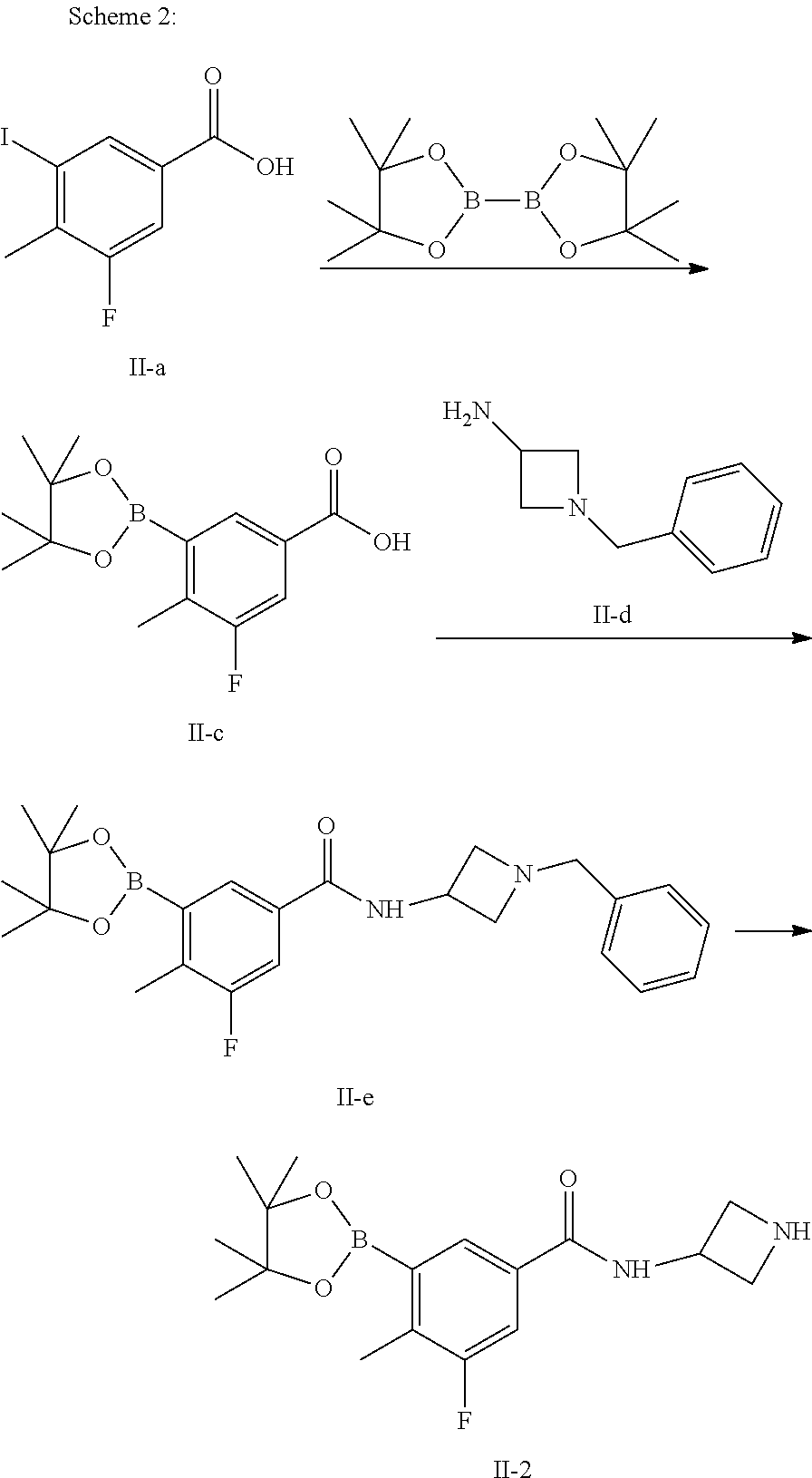
C00044
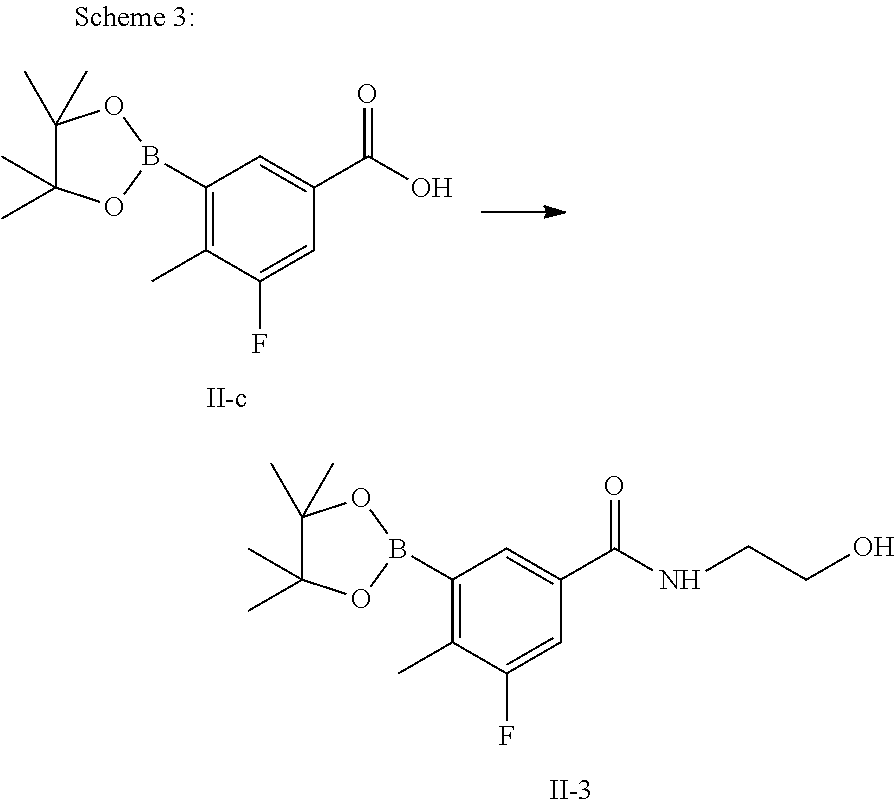
C00045

C00046

C00047

C00048

C00049

C00050

C00051

C00052

C00053

C00054

C00055

C00056

C00057

C00058

C00059

C00060

C00061

C00062

C00063

C00064

C00065

C00066

C00067

C00068

C00069

C00070

C00071

C00072

C00073

C00074

C00075
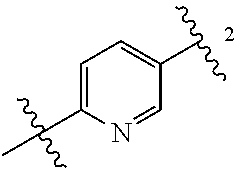
C00076

C00077

C00078

C00079

C00080

C00081

C00082

C00083

C00084

C00085

C00086

C00087

C00088

C00089

C00090

C00091

C00092

C00093

C00094

C00095

C00096

C00097

C00098

C00099
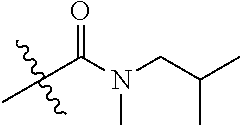
C00100

C00101

C00102

C00103

C00104

C00105

C00106

C00107

C00108

C00109

C00110

C00111

C00112

C00113

C00114

C00115

C00116

C00117

C00118

C00119

C00120

C00121

C00122
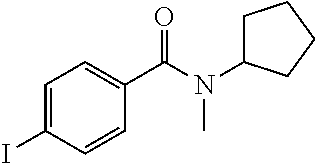
C00123

C00124

C00125

C00126

C00127

C00128

C00129

C00130

C00131

C00132

C00133

C00134

C00135

C00136

C00137

C00138

C00139

C00140

C00141

C00142

C00143

C00144

C00145

C00146

C00147

C00148

C00149

C00150

C00151

C00152

C00153

C00154

C00155

C00156

C00157

C00158

C00159

C00160

C00161

C00162

C00163

C00164

C00165

C00166

C00167

C00168

C00169

C00170

C00171

C00172

C00173

C00174

C00175

C00176

C00177

C00178

C00179

C00180

C00181

C00182

C00183

C00184

C00185

C00186

C00187

C00188

C00189

C00190

C00191

C00192

C00193

C00194

C00195

C00196

C00197

C00198

C00199

C00200

C00201

C00202

C00203

C00204

C00205

C00206

C00207

C00208

C00209

C00210

C00211

C00212

C00213

C00214

C00215

C00216

C00217

C00218

C00219

C00220

C00221

C00222

C00223

C00224

C00225

C00226

C00227

C00228

C00229

C00230

C00231

C00232

C00233

C00234

C00235

C00236

C00237

C00238

C00239
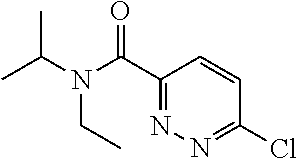
C00240

C00241

C00242

C00243

C00244

C00245

C00246

C00247

C00248

C00249

C00250

C00251

C00252

C00253

C00254

C00255

C00256

C00257

C00258

C00259

C00260

C00261

C00262

C00263

C00264

C00265

C00266

C00267

C00268

C00269

C00270

C00271

C00272

C00273

C00274

C00275

C00276

C00277

C00278

C00279

C00280

C00281

C00282

C00283

C00284

C00285

C00286

C00287

C00288

C00289

C00290

C00291

C00292

C00293

C00294

C00295

C00296

C00297

C00298

C00299

C00300

C00301

C00302

C00303

C00304

C00305

C00306

C00307

C00308

C00309

C00310

C00311

C00312

C00313

C00314

C00315

C00316

C00317

C00318

C00319

C00320

C00321

C00322

C00323

C00324

C00325

C00326

C00327

C00328

C00329

C00330
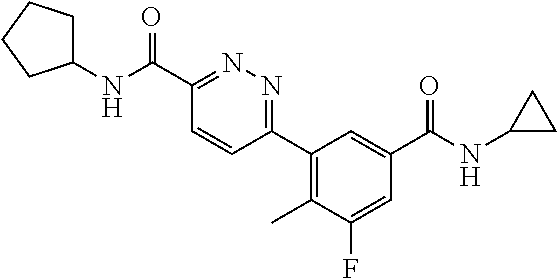
C00331

C00332

C00333

C00334

C00335

C00336

C00337

C00338

C00339

C00340

C00341

C00342

C00343

C00344

C00345

C00346

C00347

C00348

C00349

C00350

C00351

C00352

C00353

C00354
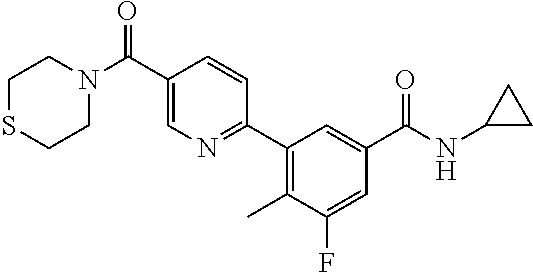
C00355

C00356

C00357
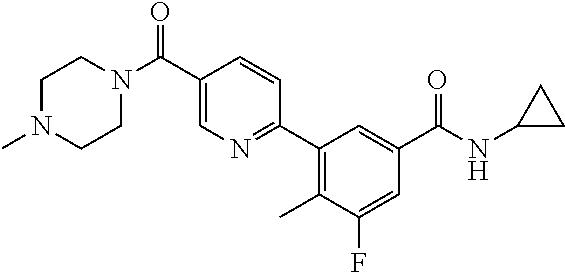
C00358

C00359

C00360

C00361

C00362

C00363

C00364

C00365

C00366

C00367

C00368

C00369

C00370

C00371

C00372

C00373

C00374

C00375

C00376
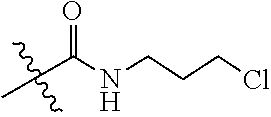
C00377

C00378

C00379

C00380

C00381

C00382

C00383

C00384

C00385

C00386

C00387

C00388

C00389

C00390

C00391

C00392

C00393

C00394

C00395

C00396

C00397

C00398

C00399

C00400

C00401

C00402

C00403

C00404

C00405

C00406

C00407

C00408

C00409

C00410

C00411

C00412

C00413

C00414

C00415

C00416

C00417

C00418

C00419

C00420

C00421

C00422

C00423
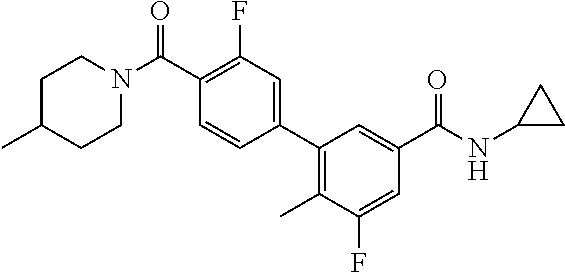
C00424

C00425

C00426

C00427

C00428

C00429

C00430

C00431

C00432

C00433
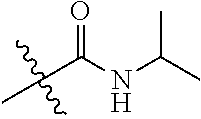
C00434

C00435

C00436

C00437

C00438

C00439

C00440

C00441

C00442

C00443

C00444

C00445

C00446
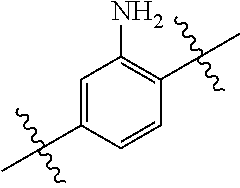
C00447

C00448

C00449

C00450

C00451
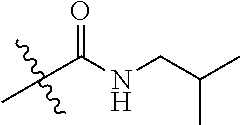
C00452

C00453

C00454

C00455

C00456

C00457

C00458

C00459

C00460

C00461

C00462
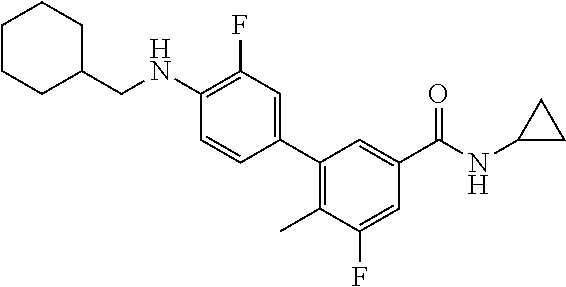
C00463

C00464

C00465

C00466

C00467

C00468

C00469

C00470

C00471

C00472

C00473

C00474

C00475

C00476

C00477

C00478

C00479

C00480

C00481

C00482

C00483

C00484

C00485

C00486

C00487

C00488

C00489

C00490

C00491

C00492

C00493

C00494

C00495

C00496

C00497

C00498

C00499

C00500

C00501

C00502

C00503

C00504

C00505

C00506

C00507

C00508
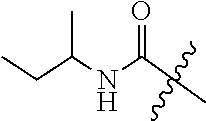
C00509

C00510

C00511

C00512

C00513

C00514

C00515

C00516

C00517

C00518

C00519

C00520

C00521

C00522

C00523

C00524

C00525

C00526

C00527

C00528

C00529

C00530

C00531

C00532

C00533

C00534

C00535

C00536

C00537

C00538

C00539

C00540

C00541

C00542

C00543

C00544

C00545

C00546

C00547

C00548

C00549

C00550

C00551

C00552

C00553

C00554

C00555

C00556

C00557

C00558

C00559

C00560

C00561

C00562

C00563

C00564

C00565

C00566

C00567
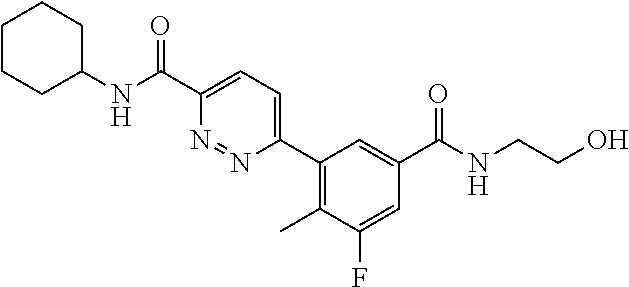
C00568

C00569

C00570

C00571

C00572

C00573

C00574

C00575

C00576

C00577

C00578

C00579

C00580

C00581

C00582

C00583

C00584

C00585

C00586

C00587

C00588

C00589

C00590

C00591

C00592

C00593

C00594

C00595

C00596

C00597

C00598

C00599

C00600

C00601

C00602

C00603

C00604

C00605

C00606

C00607

C00608

XML
uspto.report is an independent third-party trademark research tool that is not affiliated, endorsed, or sponsored by the United States Patent and Trademark Office (USPTO) or any other governmental organization. The information provided by uspto.report is based on publicly available data at the time of writing and is intended for informational purposes only.
While we strive to provide accurate and up-to-date information, we do not guarantee the accuracy, completeness, reliability, or suitability of the information displayed on this site. The use of this site is at your own risk. Any reliance you place on such information is therefore strictly at your own risk.
All official trademark data, including owner information, should be verified by visiting the official USPTO website at www.uspto.gov. This site is not intended to replace professional legal advice and should not be used as a substitute for consulting with a legal professional who is knowledgeable about trademark law.